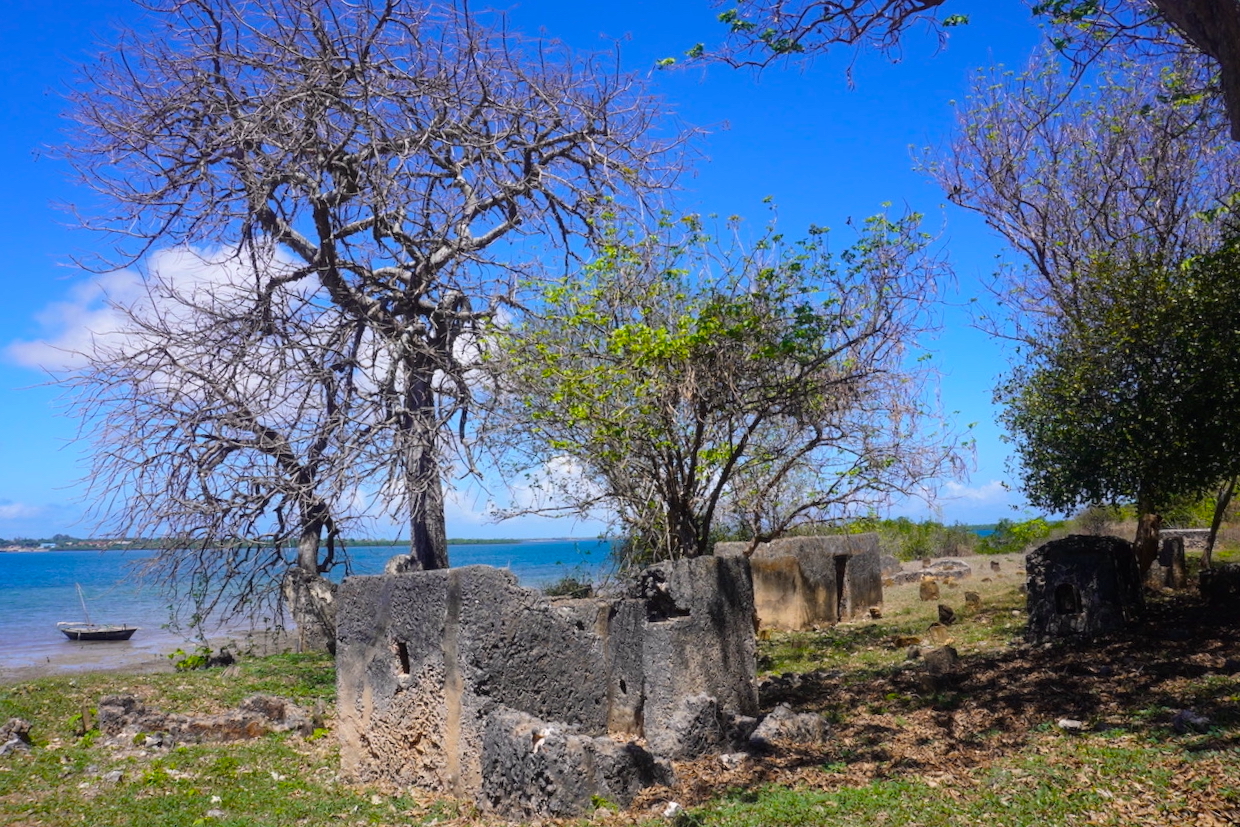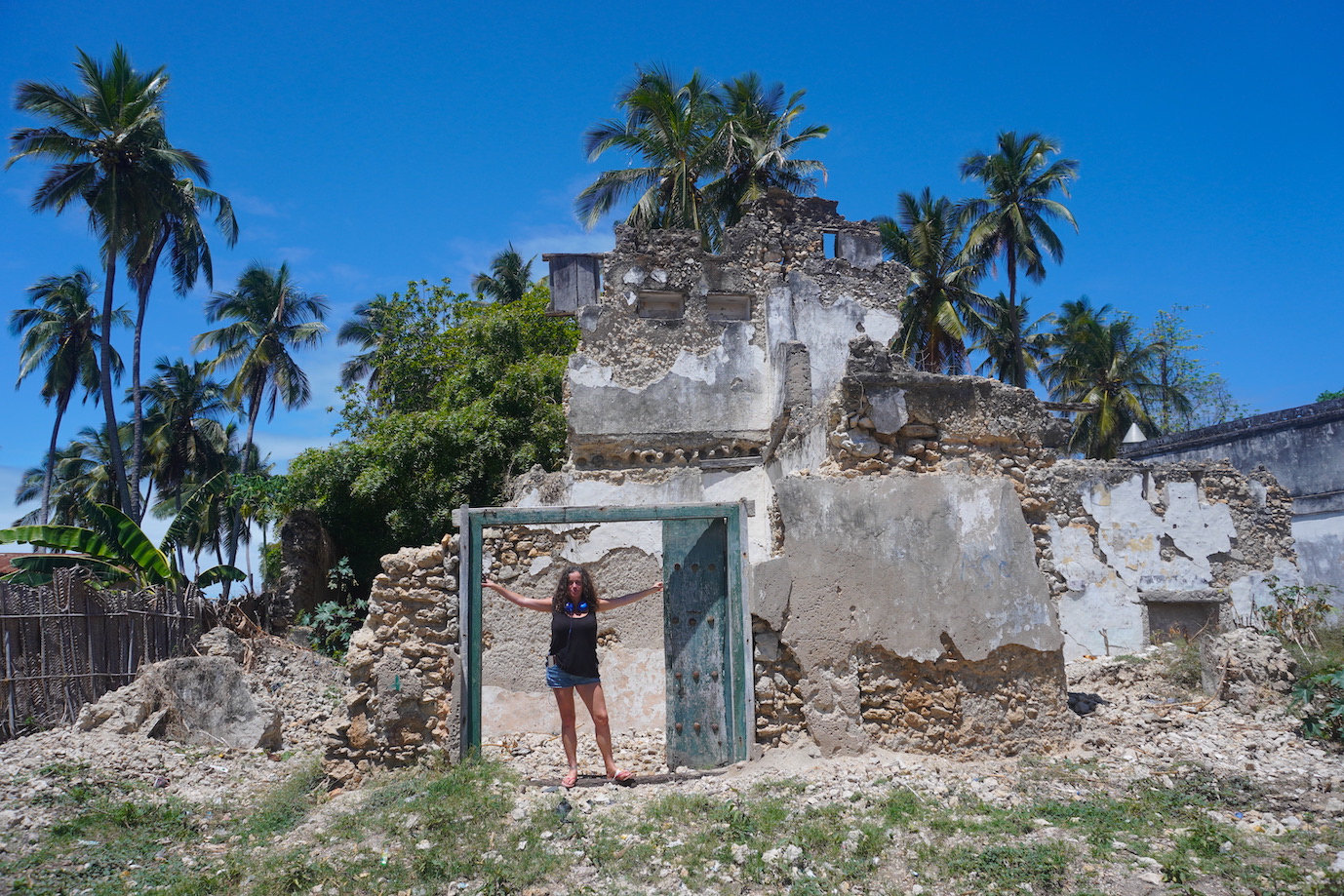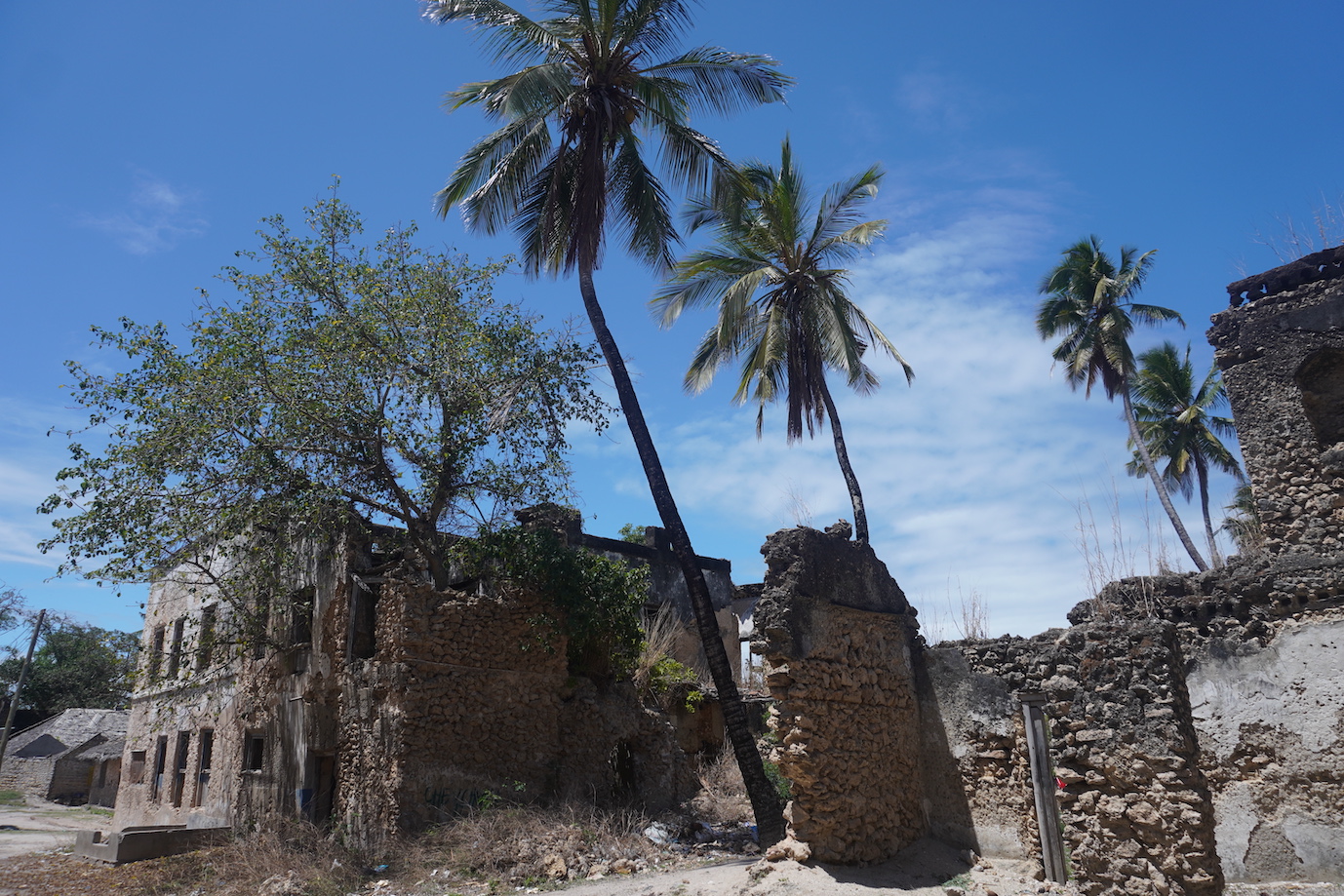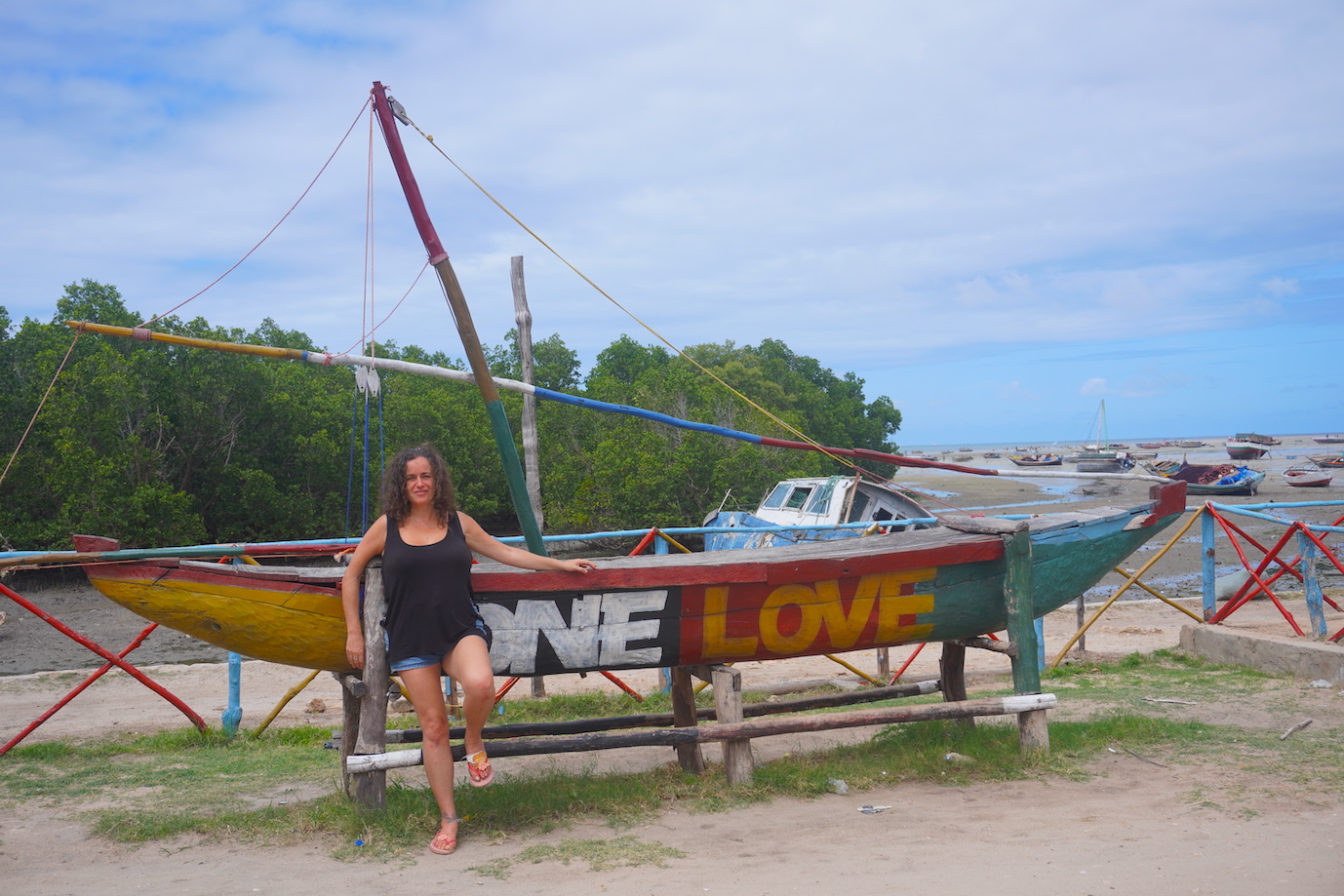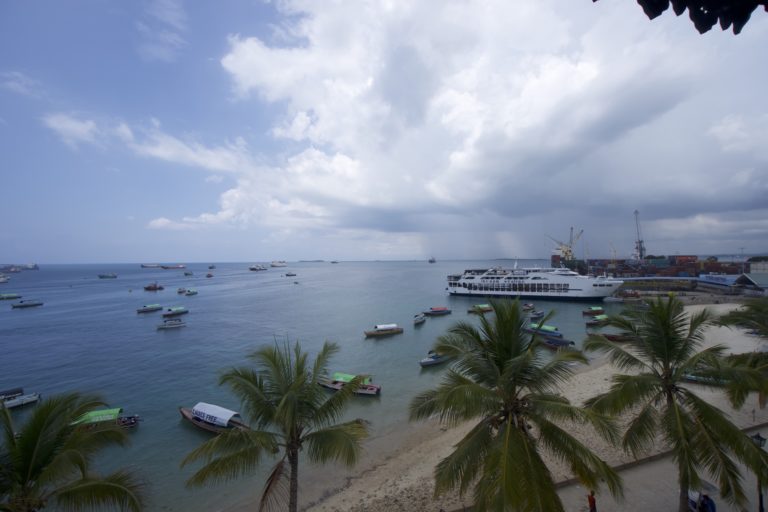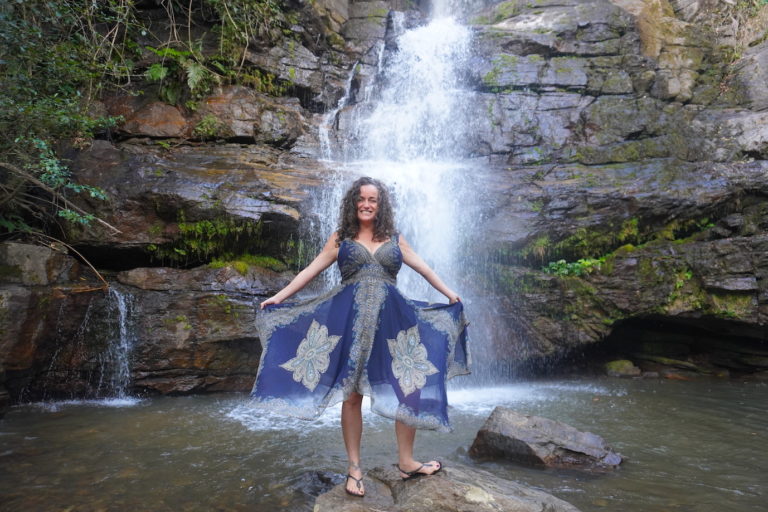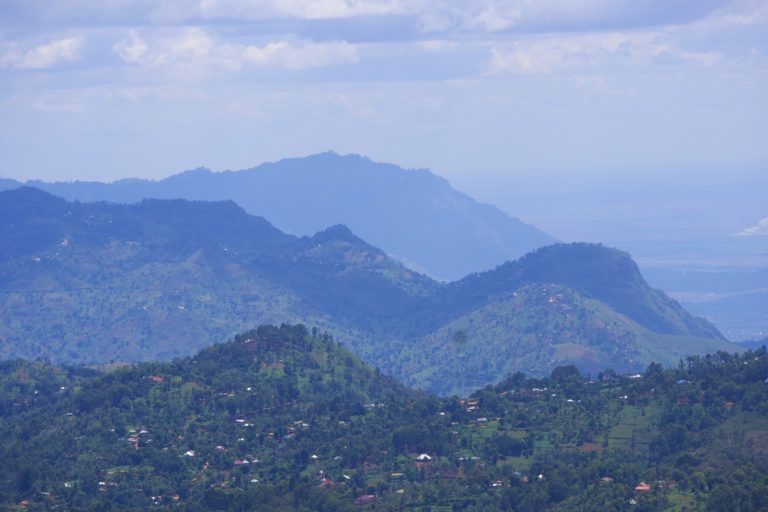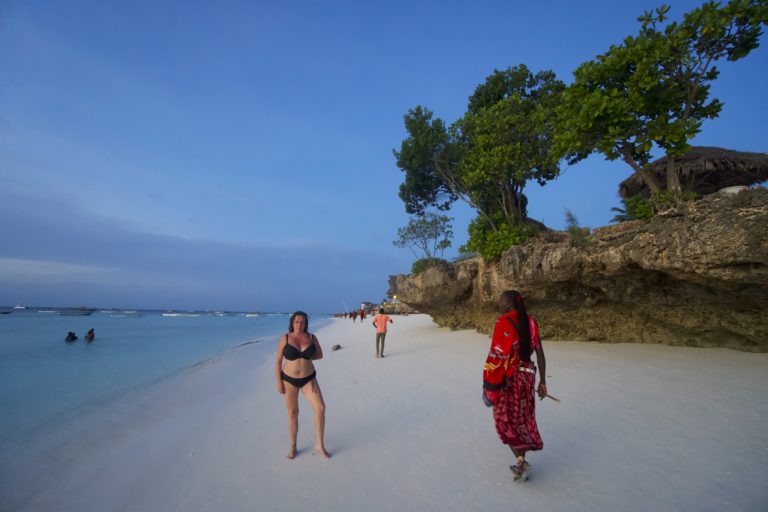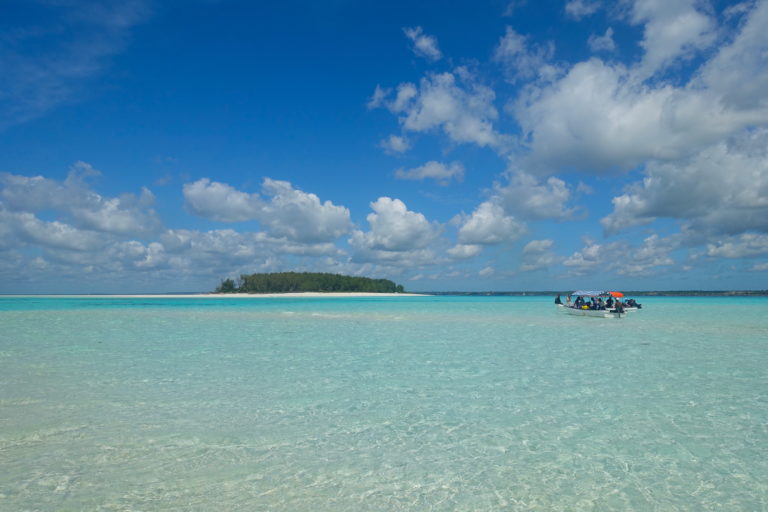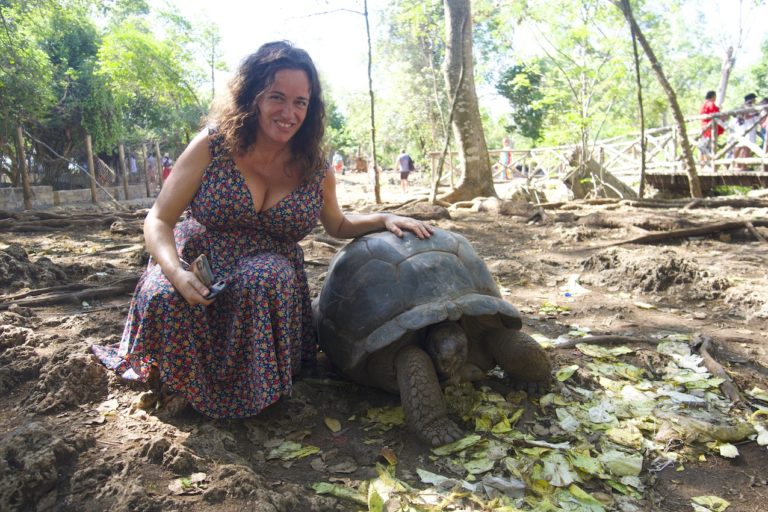15 TANZANIA HISTORICAL SITES (+MAP, TIPS, VISIT INFO)
Tanzania is not only one of the best safari, beach and hiking destinations in the world but it is also home to some very interesting historical sites.
From pre historical paintings, to natural stunning formations, sacred sites and impressive architecture once you have visited some of Tanzania historical sites you will be amazed by this country rich historical heritage. Some of the them are included in the UNESCO World Heritage Sites directory.
I have extensively travelled around the country and personally visited some of Tanzania’s more notable historical sites and I think paying them a visit is really worth the experience.
In this guide I will share some of the best historical sites in the country, some of my photos and experience and some useful information so that you can plan your visit to some or all of these sites and make the best out of it.
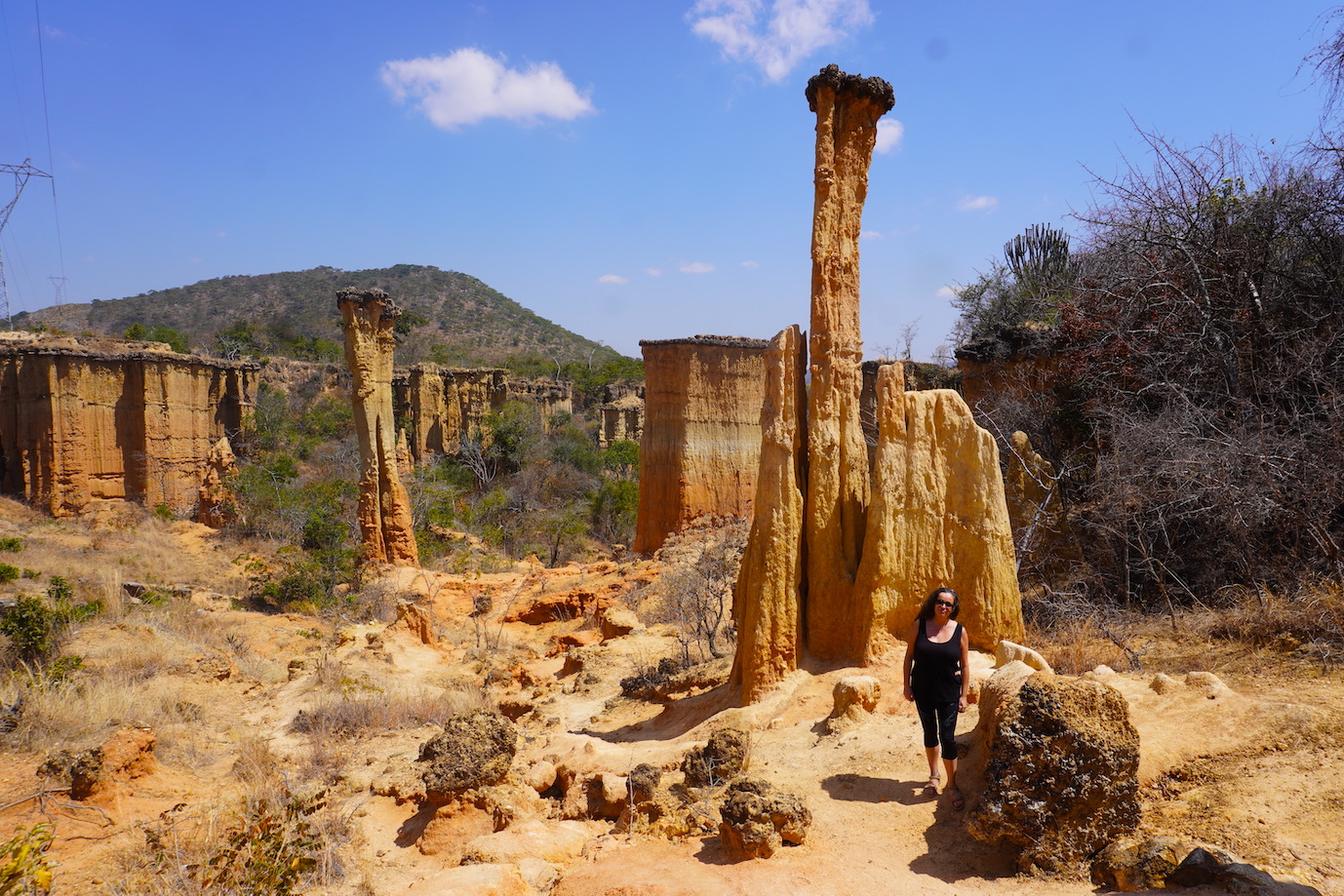
MY EXPERIENCE VISITING TANZANIA HISTORICAL SITES
My experience visiting Tanzania’s historical sites has been very positive and enriching. I have been several times in Stone Town and to its historical sites as I stayed for several months in the Unguja island, in the Zanzibar archipelago.
I traveled mainland extensively for several months and have visited all the sites mentioned in this blog. It was a really nice experience and showed me that Tanzania is much more than a safari and beach destination.
Traveling to some of these sites requires time as they are only reachable by road, and bus or car travel is pretty slow in the country. If you have the time I really recommend you traveling to some of them. Many of them are truly hidden gems and I can ensure you, you will be the only tourist in the area, which is pretty rare in most places these days.
TANZANIA HISTORICAL SITES
Find here the list of my favorite historical sites in Tanzania.
KILWA KISIWANI
Kilwa Kisiwani is an island and a historical site in Tanzania in the township of Kilwa Masoko. The site is a World UNESCO Heritage Site and it is one of the most impressive documentary evidences for the growth of the Swahili culture and one of the most beautiful historical sites in the country.
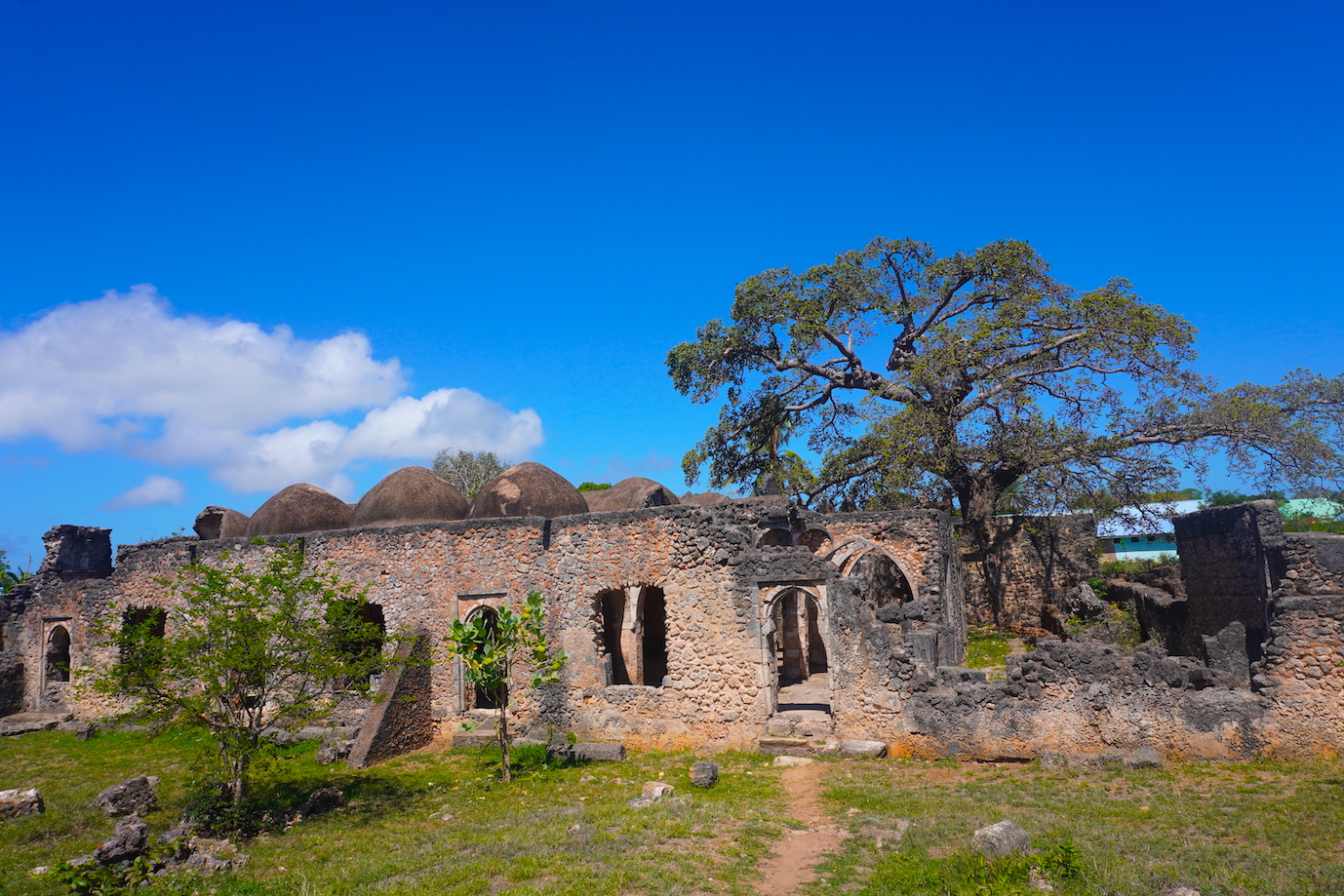
The island landscape is simply stunning and the island is still inhabited by a local community. You will be able to enjoy a local lunch during your visit and also walk close to the sea side during your visit.
Kilwa Kisiwani used to a trading city in the Indian ocean and it was described by the traveler Ibn Battuta as the most beautiful city in the world.
The Great Mosque of Kilwa Kisiwani is the oldest standing mosque on the East African coast and the most impressive structure in the archeological site.
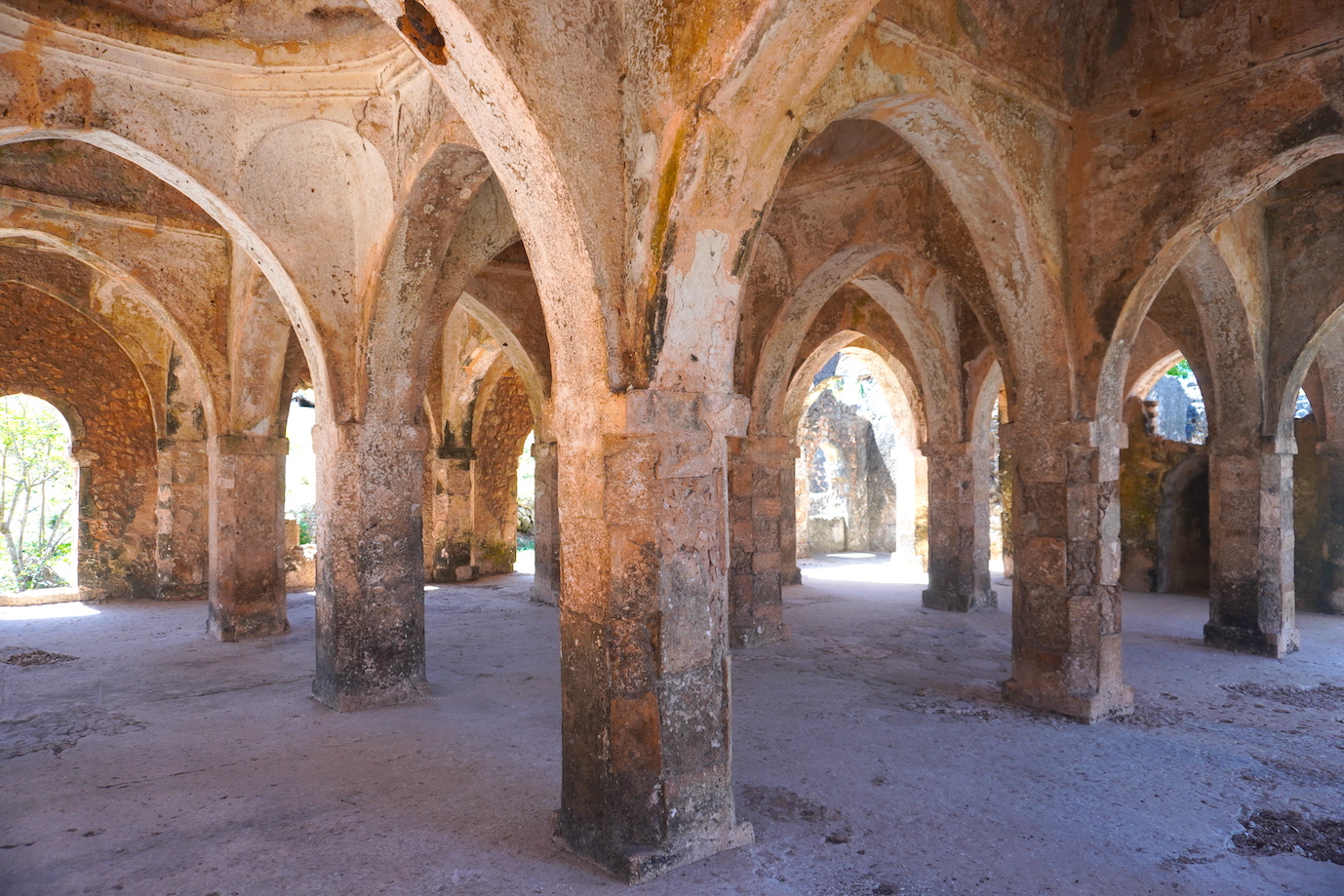
The island was occupied from the 9th to the 19th and it reached its period of more prosperity in the 13th and 14th centuries.
In the 16th the Portuguese people established a fort in the island which marked the beginning of its decline.
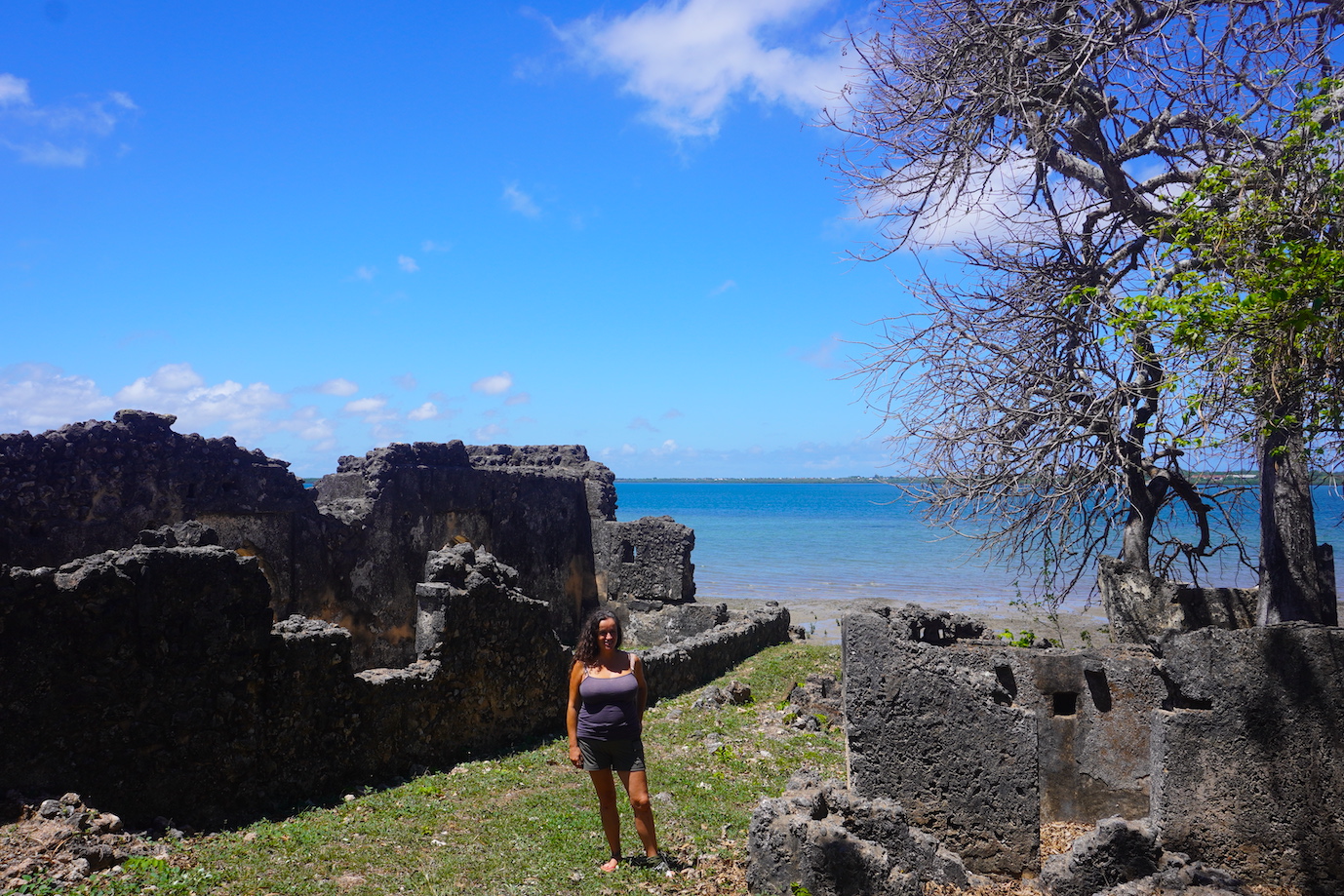
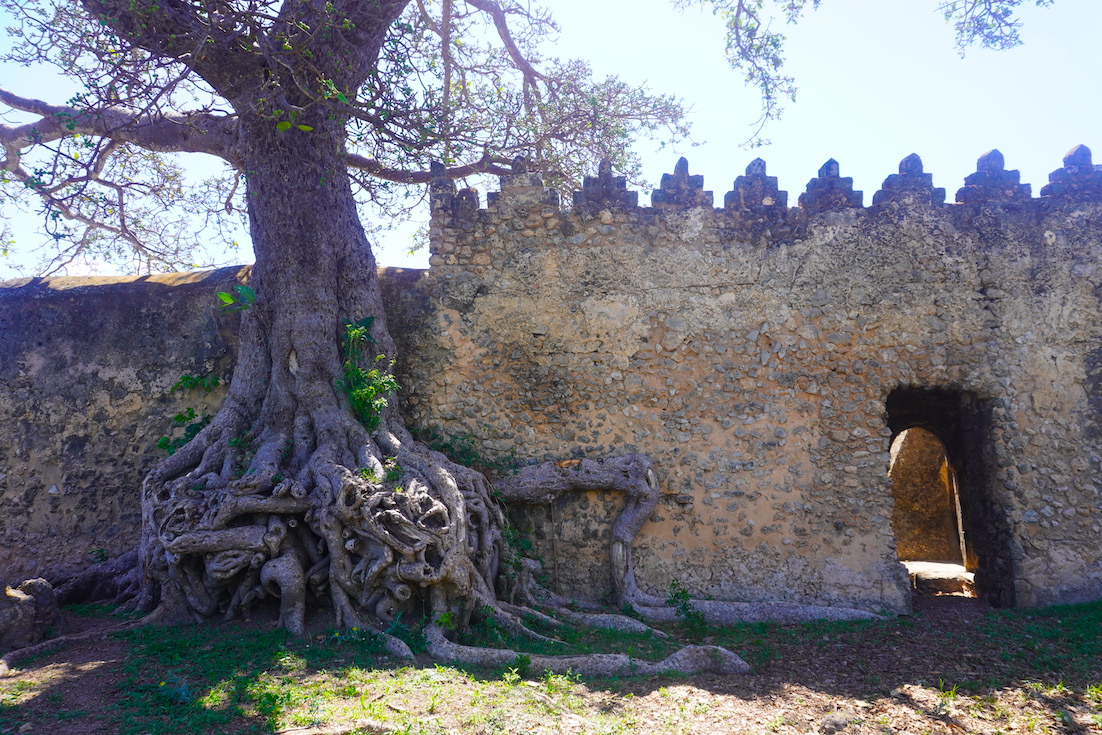

This historical site is the perfect opportunity to just day dream about how the Tanzanian past might have been while you wander around the island. I really recommend you to get a tour guide that will guide you through the ruins as you will get the historical insights about each structure.
There are still many unexcavated areas in the island, so we can expect some secrets revealed in the upcoming years.
PRACTICAL INFORMATION AND TIPS
Kilwa Kisiwani opens daily from 10:00 until 16:00 and it is accessible from Kilwa Masoko by boat.
The entrance fee to the site is 26 000 TSh and the ticket must be purchased at the antiquities office in Kilwa Masoko centre before taking the boat.
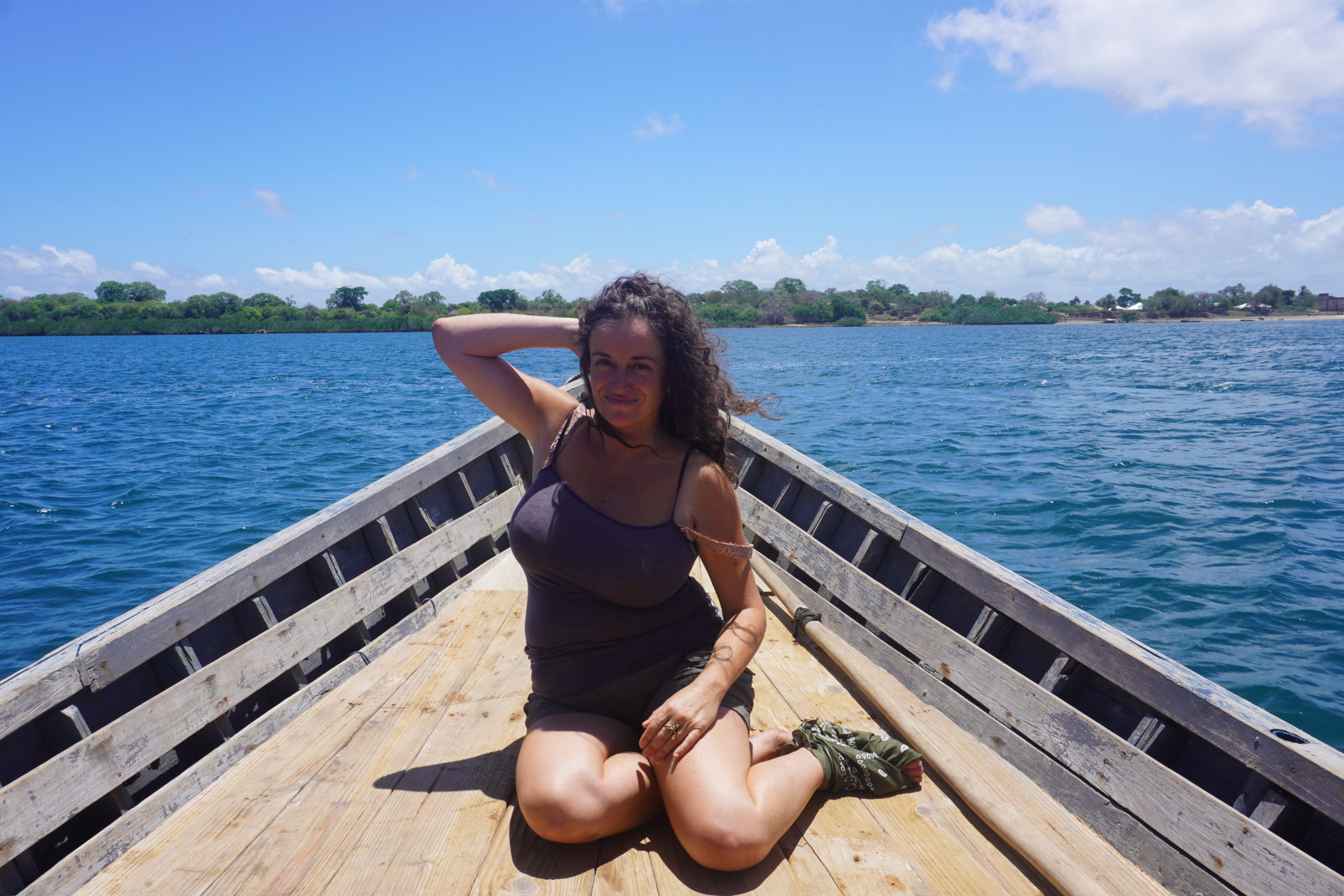
Kilwa Masoko is located 318 Km from Dar Es Salaam and it is accessible by road, taking approximately 5 hours to get there.
There is also a small airport 3 Km from Kilwa and you can charter a plane to get there but I do not recommend this option as it is quite pricey. I did myself the trip by bus, as I did many other bus trips around Tanzania and it is fine.
Kilwa Masoko is also home to some stunning unexplored beaches and amazing diving and snorkeling so you will not only enjoy a very rewarding cultural experience but also some awesome time at the beach.
KILWA KIVINJE
Kilwa Kivinje also known as “Mji wa Kale wa Kivinje” in Swahili, is a protected historical area located just 24 Km from Kilwa Masoko, along the Indian Ocean coast. The historical site is prominent for its medieval Swahili ruins and some well-preserved Swahili buildings dating back to the 19th century.
This settlement served as a refuge for the earlier inhabitants of the Kilwa Kisiwani when Vasco da Gama invaded the island in 1505, and later for more refugees running away from the Madagascar pirates.
PRACTICAL INFORMATION AND TIPS
The site is located just 29 Km from Kilwa Masoko, so the best option is to base yourself in Kilwa Masoko as the beach there is stunning and take a days trip to Kilwa Kivinje. The best option to get there is by taxi or Tuk Tuk. I would recommend to take a taxi as it can get pretty hot in the area during the day.
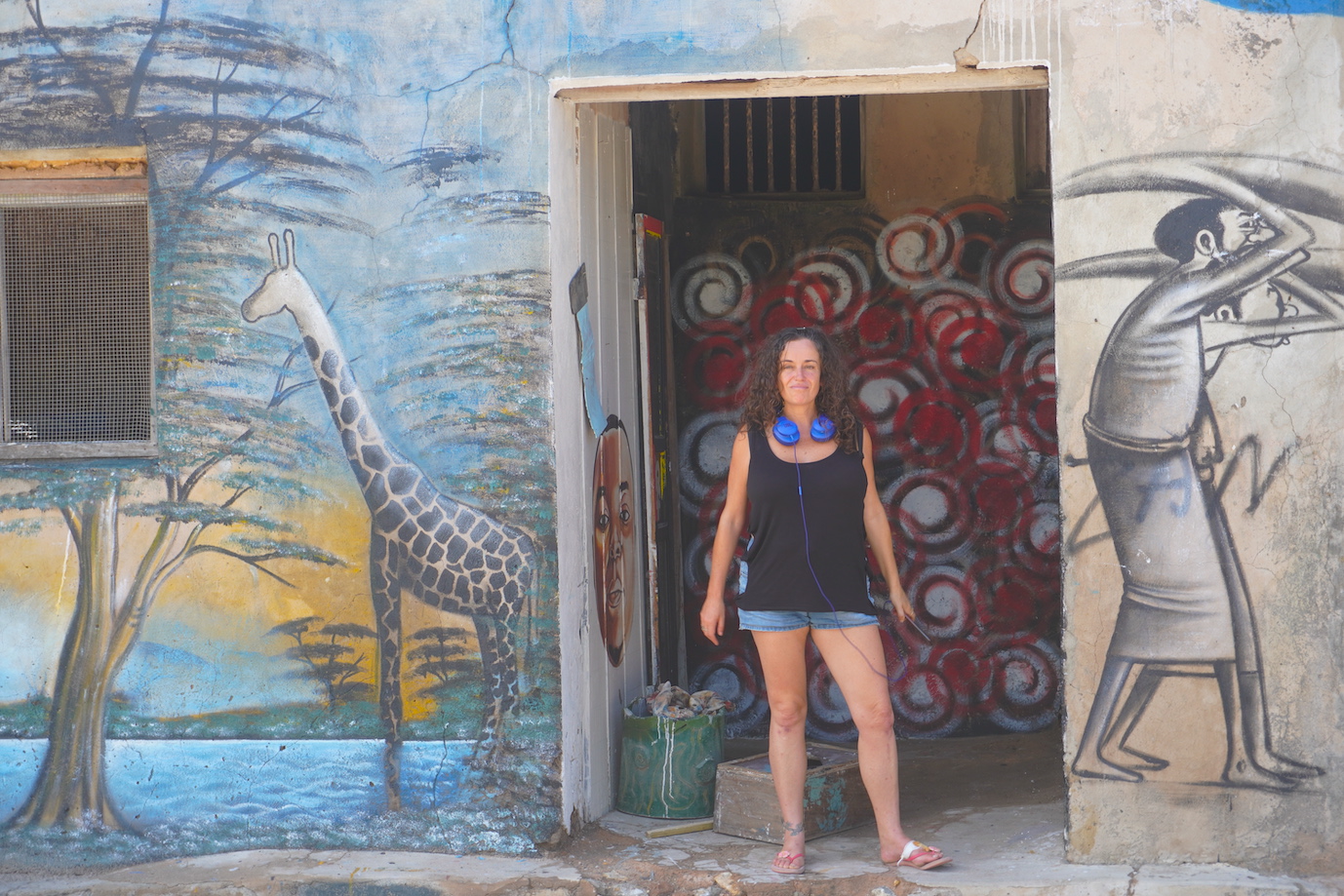
The ticket must be purchased at the antiquities office in Kilwa Masoko and it is 9$ or 23 000 TSh.
ISMILA PILLARS AND STONE AGE SITE
The Ismila pillars are some out this world shaped natural pillars made of sandstone. The peculiar beauty of this site is the result of a very long process of erosion. The site was once a lake that dried up and when this happened the wind continued eroding the site. The bizarre and stunning landscape made this site worth a visit but there is still more.
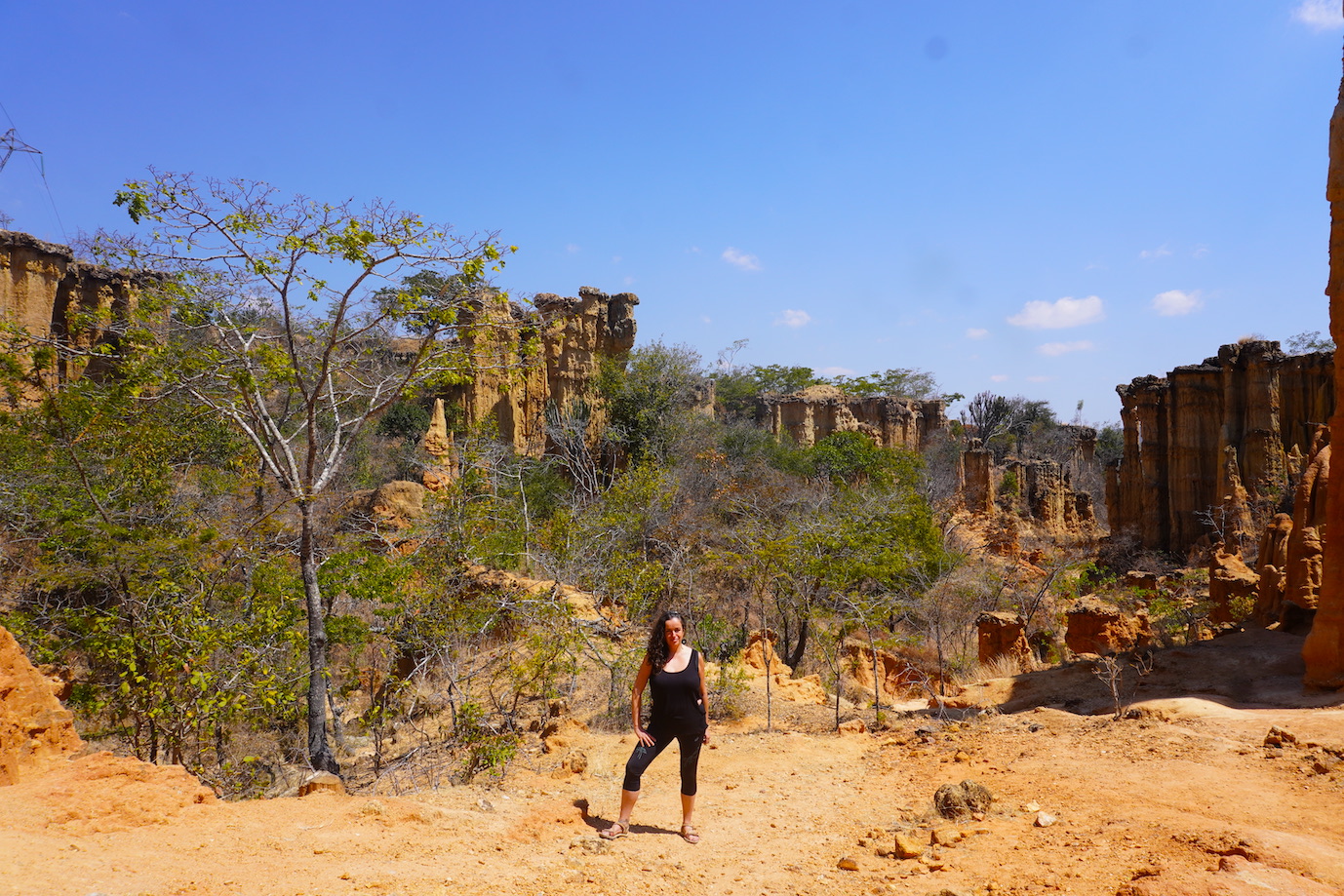
In the late 1950s a group of archaeologists discovered a site that stands as one of the most significant Stone Age finds ever recorded. They unearthed artifacts dating back between 60.000 and 100.000 years. There is a museum close to the site with an exhibition of these discoveries. The Ismila Stone Age site is a hidden gem in Tanzania and very worth the visit.
PRACTICAL INFORMATION AND TIPS
The entrance fee to the site is around 20 000 Tanzanian Shillings, that is around 8 $ and there is a museum where you can see some of the artifacts discovered in the area and read a bit about the history of the site.
The site is 21 Km away from the Iringa and the best way to visit the site is to base yourself in Iringa and make a day trip to Ismila Stone Age site.
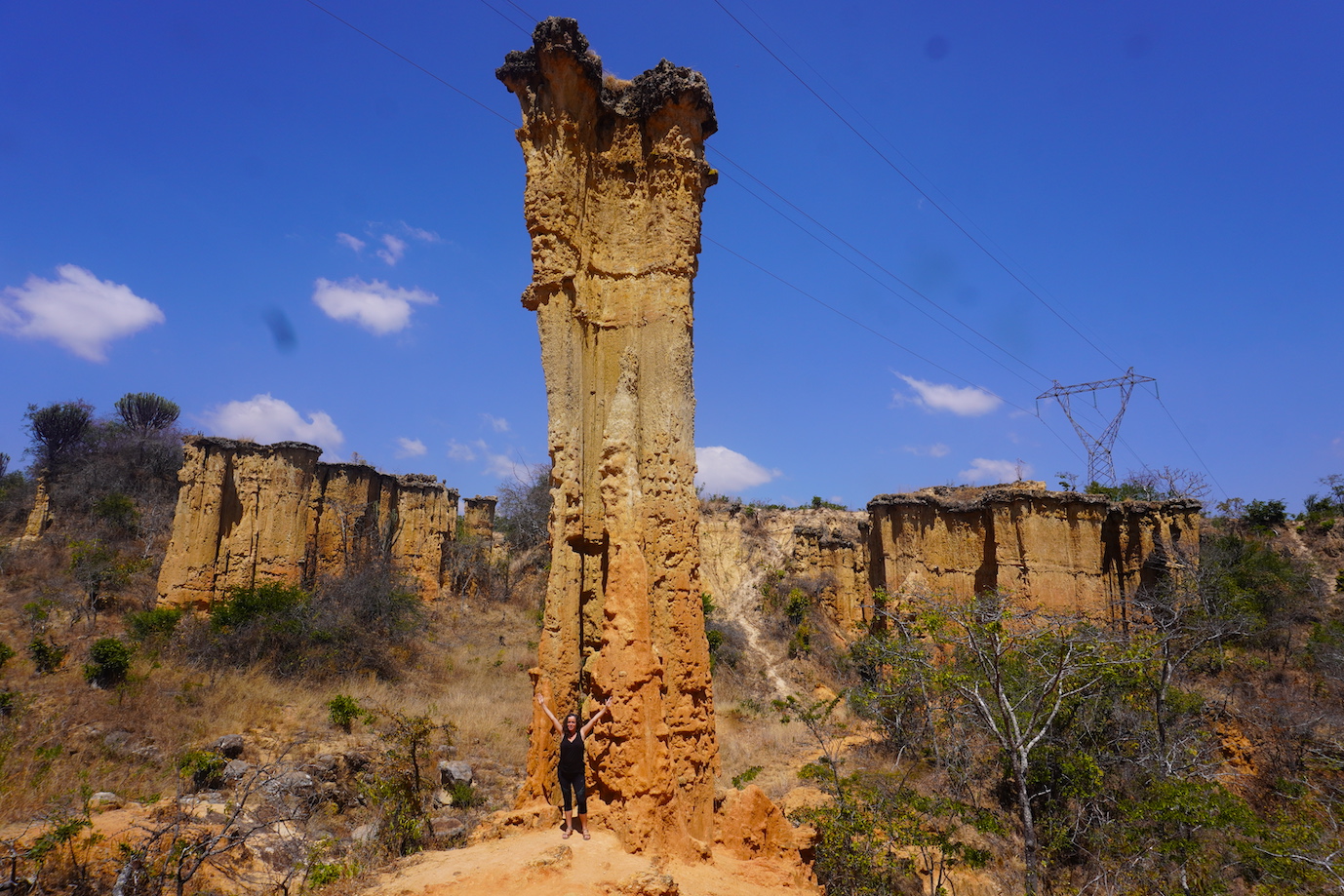
You can reach Iringa from Dar Es Salaam by train or plane. The plane trip can be pretty pricey so I recommend you to use the bus to get there. I did the bus myself by bus. You need to go to the Ubongo bus station in Dar Es Salaam and get your bus from there.
Get a guide to visit the site as I did as he will offer a lot of useful information and point you to the hidden corners you will not be able to find by yourself.
IGELEKE ROCK ART SITE
The Igeleke Rock Art Site is a prehistoric site, around 60 000 years old, according to my tour guide, very similar and with some underlying relationships to the Kondoa Rock art paintings.
The paintings represent some animals that still exist nowadays, such as elephants and giraffes, human figures and artifacts used during those times.
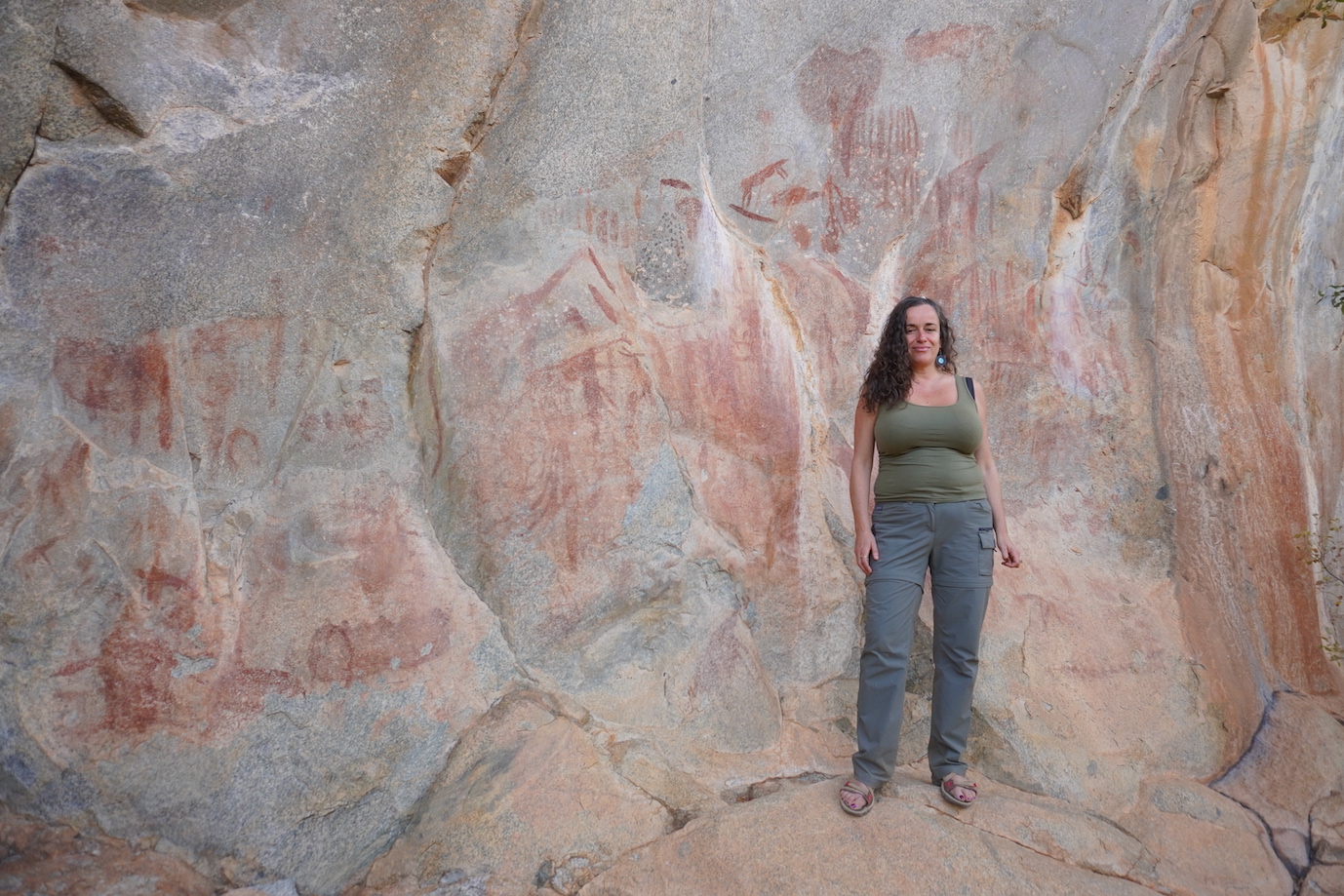
The art site is located in the vicinity of Iringa, west of the Dodoma road.
PRACTICAL INFORMATION AND TIPS
In order to visit the site you need to base yourself in Iringa. The best way to come here is by road, I did the trip by bus. You can take a bus from Dar Es Salaam to Morogoro, stop there for a visit hiking the Uluguru mountains and then travel to Iringa.
You might want to arrange your own car and drive there.
To get to the site from Iringa center you can take any dalla dalla heading North. After 6 Km you will see a sign reading ‘Igeleke Rock Arts.’ I did the trip by Tuk Tuk so that I did not have to do the dalla dalla waiting time.
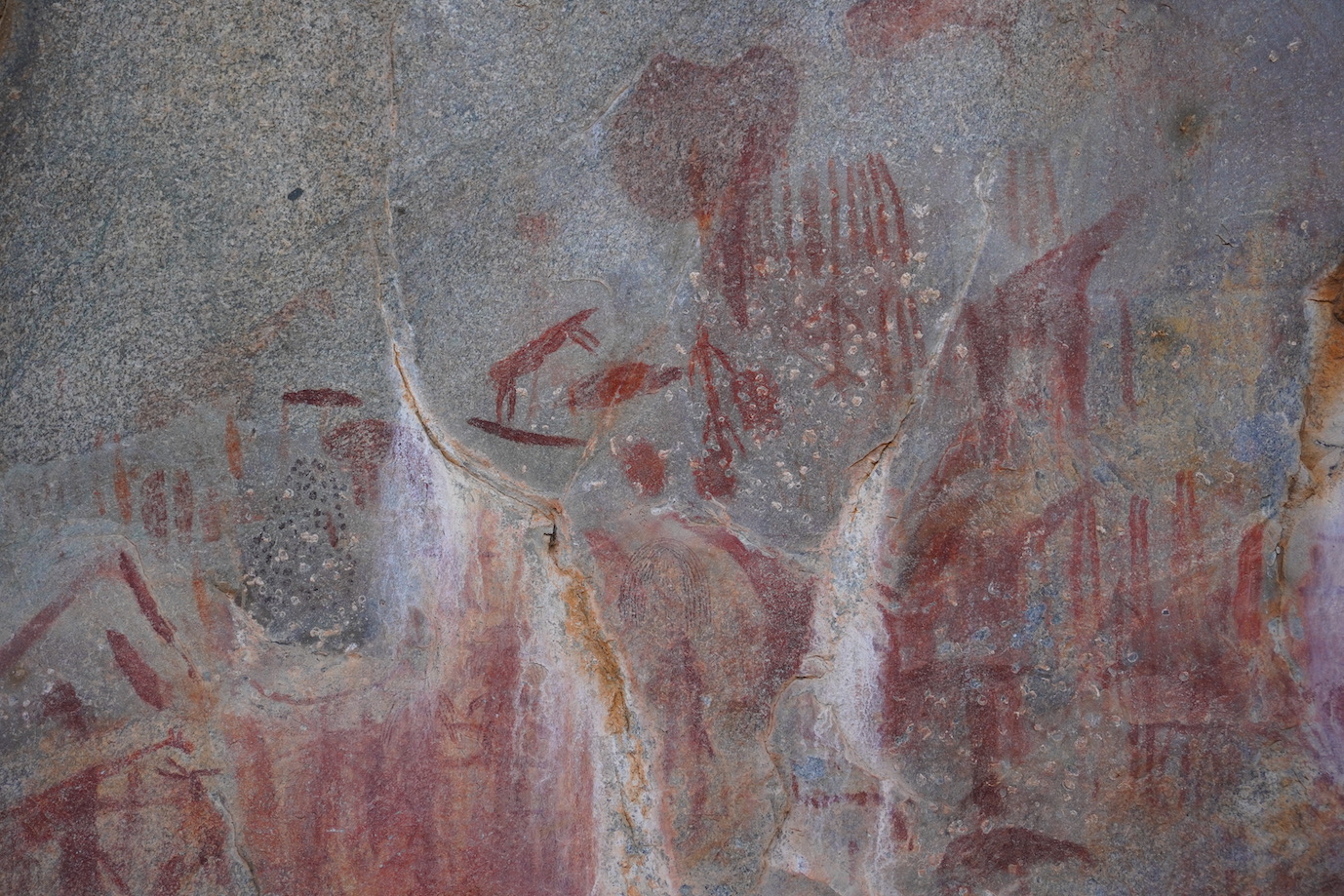
At the door of the site you will a telephone number that you need to call to get someone opening you the door and guiding you through the site. This is they way I did it but it is a bit risky as I had to wait 40 minutes for someone to answer the phone and I though, that was it, that I have wasted my trip there, which at the end I did not. To ensure your visit walk around Iringa and get a tour operator to arrange the visit for you.
GANGILONGA ROCK
Gangilonga Rock, or the rock that speaks, is a historical site located in the center or Iringa. The name is made of two Hehe words, Lligangalyelilonga. “Liganga” means “The stone” while “lilonga” means, that speaks. So, the definition is the “Stone that speaks”
There are two different explanations for the name. One is that the place was used in the past as a place of worship to talk with the ancestors, and the other that it was the place were Chief Mkwawa meditated and where he learned that the Germans were after him.
To get to the top is a very easy hike and you will be greeted with some stunning views of Iringa.
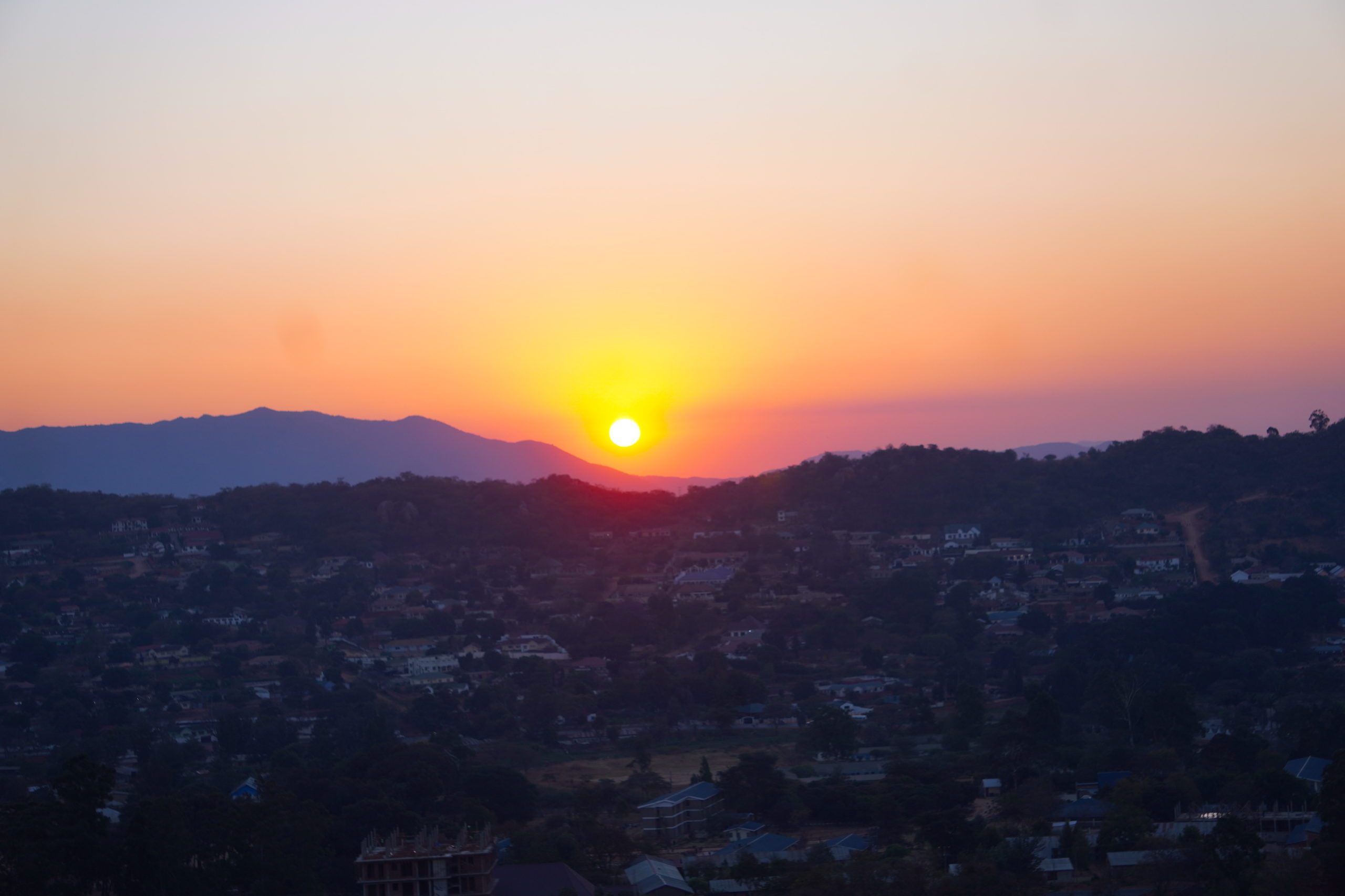
PRACTICAL INFORMATION AND TIPS
There is a little hut at the entrance where you must pay the entrance fee. The cost is approximately 2$ for , 5000 Tanzanian Shillings for foreigners and 1$, 2000 Tanzania Shillings for local people.There is a beautiful view from Iringa from the top of the rock and the sunset is stunning from there. I visited the rock twice, once during the day and then on the same day at sunset time. If you would like to do this, make sure to talk to the guard at the door, to make sure he will let you return later for sunset time.
KONDOA ROCK ART SITES
Kondoa Rock Art Sites, in Tanzania, is a UNESCO World Heritage Site renowned for its exceptional collection of prehistoric rock paintings. These ancients sites were used for ritual practices and existed for more than 40 000 years. The sites consists or more than 150 locations with thousands of invidual paintings.
The paintings represent daily life scenes, wildlife and ritual ceremonies.
PRACTICAL INFO AND TIPS
The ticket can be purchased in the government office in the small town of Kolo and the entrance fee is around 27 000 Tanzanian Shillings per adult tourist. In order to visit the site you will need a guide and motorbike transport as the distance from one painting to another can be pretty long.
KAOLE RUINS
The Kaole ruins are a national historical site in the Bagamoyo district 4km, from the city of Bagamoyo, along the Indian Ocean coast. The site consist of some ancient Swahili coral stone ruins dating from the 13th to the 16th century. There a couple of mosques and around 30 tombs, some of them believed to the resting place of the”diwanis” or local rulers. There is also a museum on the site displaying artifacts and some Chinese items.
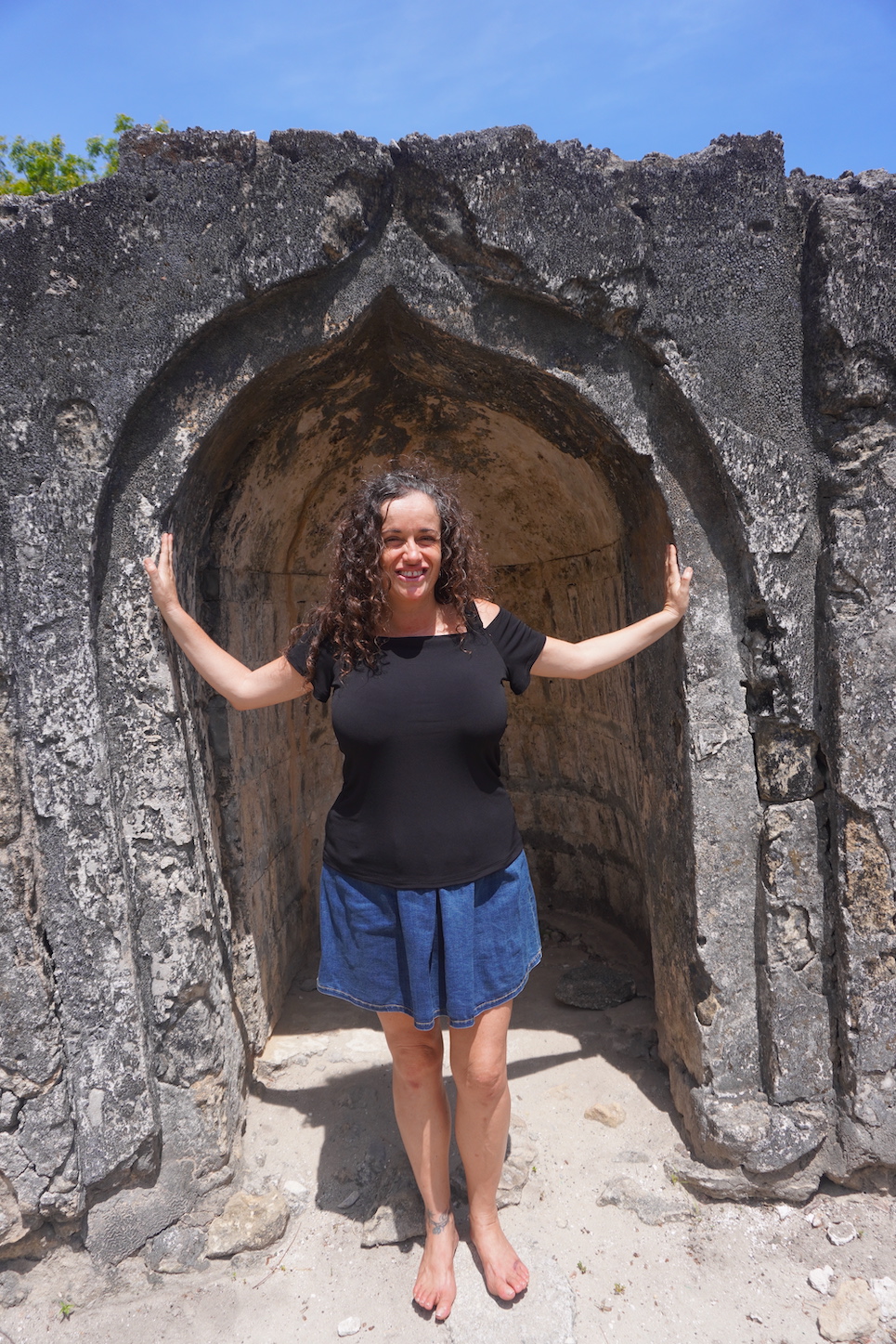
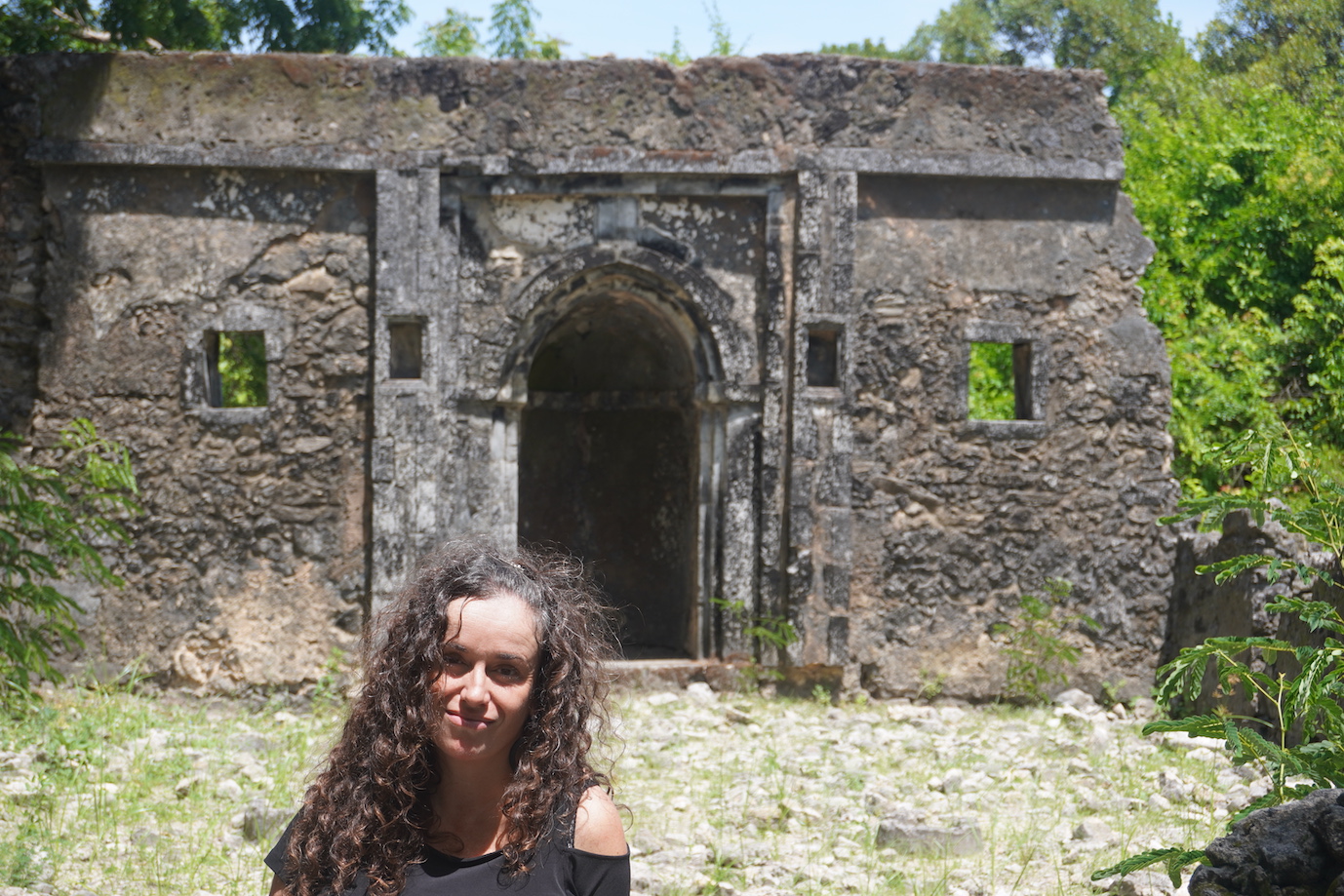
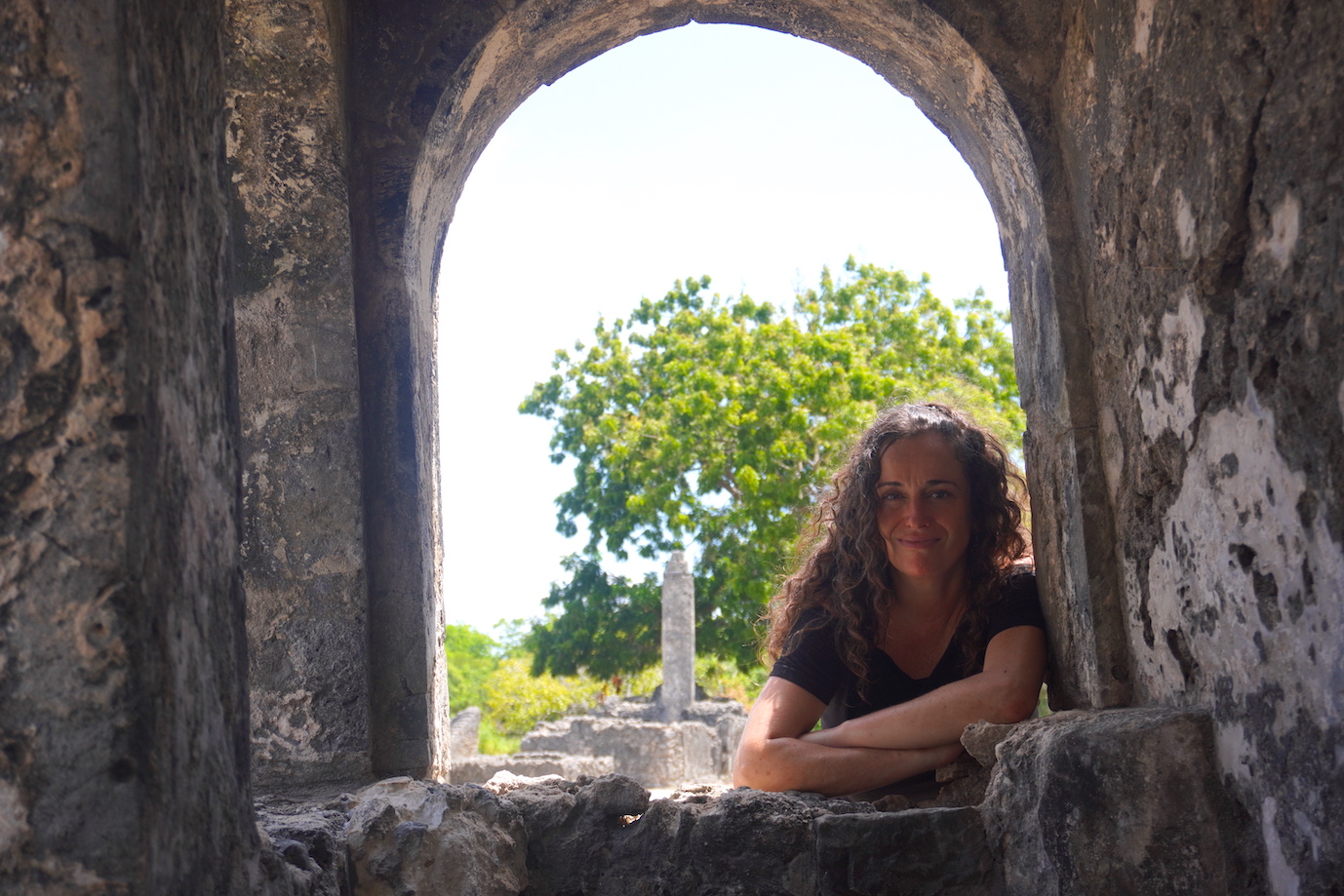
There is a centenary Baobab tree on the site, which legend says that if you walk around it a certain number of time you will gain health.
The site is really worth a visit.
PRACTICAL INFO AND TIPS
The Kaloe ruins can be visited during your stay in Bagamoyo or as day trip from Dar Es Salaam.
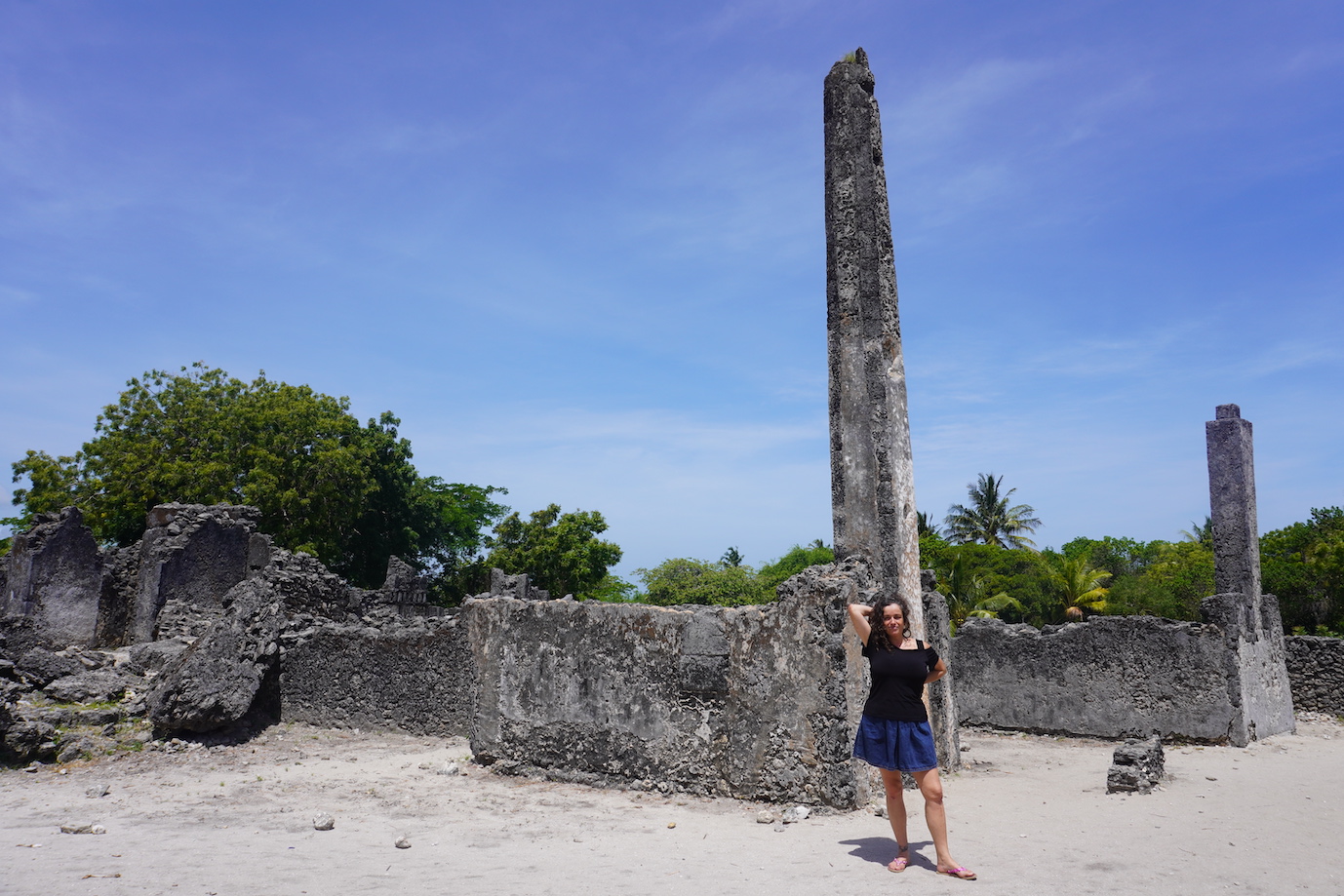
To reach the ruins from Bagamoyo the easiest way to do it by bajaji (tuk-tuk) that it costs around 5000 Tanzanian Shillings from town.
The entrance fee to Kaole ruins is 20 000 Tanzanian Shillings for foreigners.
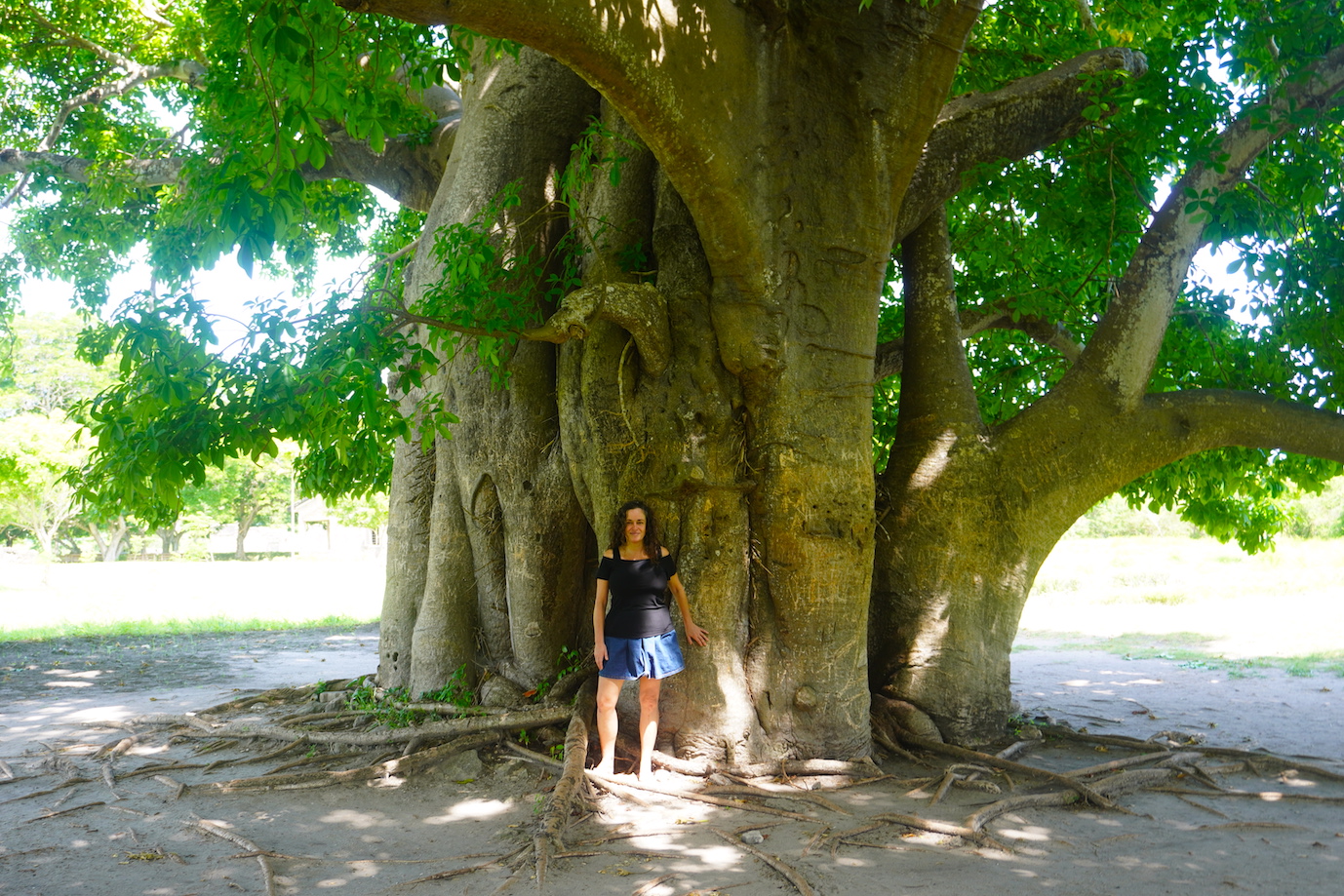
OLD FORT STONE TOWN
The Old Fort on the Zanzibar island, located in Stone Town is a historical landmark built by the Arabs in the 17th century and it is made of thick coral stone walls. The fort was originally a defensive fortress to later become a prison. These days the fort is cultural hub where events and markets take place.
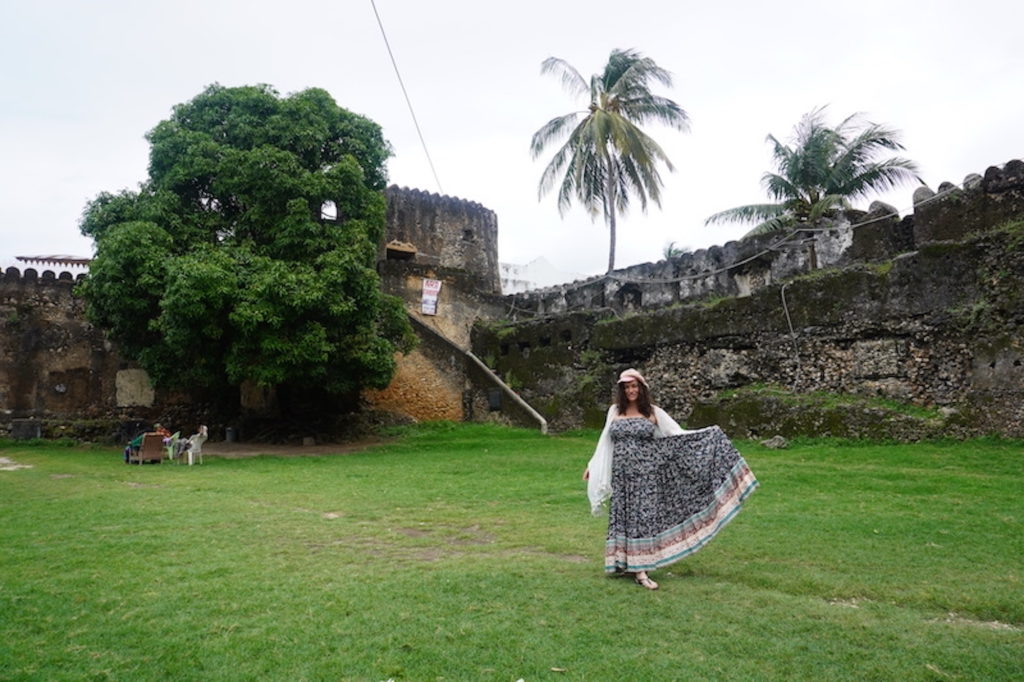
PRACTICAL INFO AND TIPS
There is no entrance fee to visit the fort during the day and there are beautiful and colorful stalls where you can buy some
SLAVE MARKET/ANGLICAN CATHEDRAL
The Anglican Church in Zanzibar is poignant testament to the the dark chapter of the slave trade in East Africa. The site was constructed on the site of the former slave market and is a living memorial to the victims of the East African slave trade.
The altar itself is positioned on the former whipping post, symbolizing the transformation from a place of suffering to one of reflection and remembrance.
The visit includes the horrific underground chambers were the slaves were kept before being shipping overseas and a history of slavery exhibit.
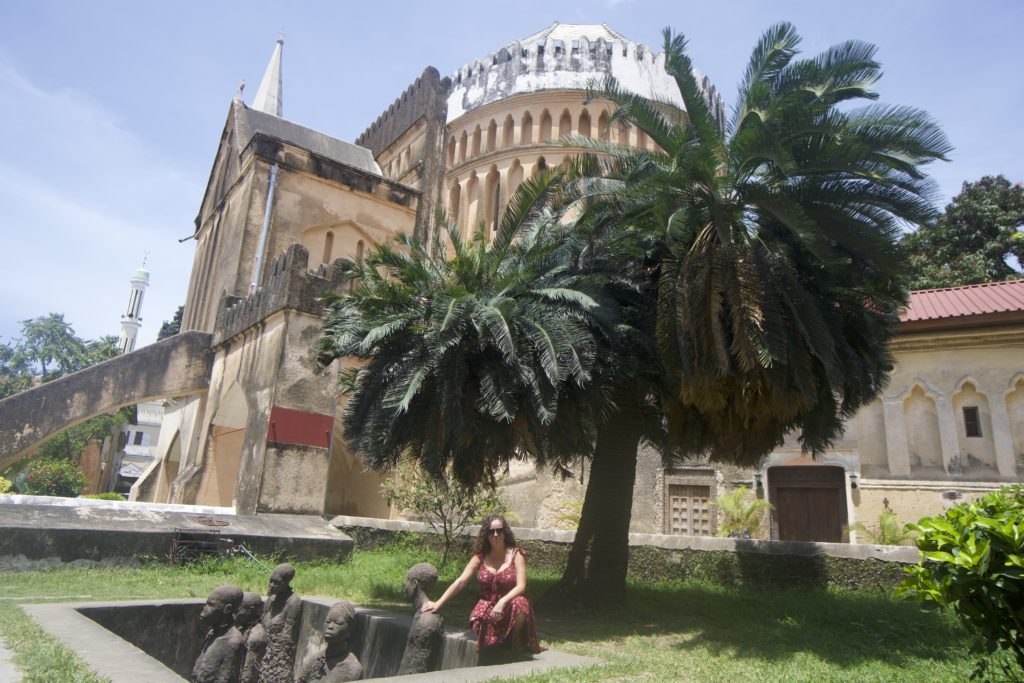
PRACTICAL TIPS AND INFO
The entrance fee is around 12.000 Tanzanian Shillings or 5$ for tourists and if you want to have a guide you need to pay a bit extra.
I recommend you to take a guide to support the local community and get to know a bit of background about the historical place.
HOUSE OF FREDDY MERCURY
Freddy Mercury is without a doubt one of the most legendary musicians of all times and what many people do not know before visiting Tanzania is that he was born in Zanzibar as Farrokh Bulsara. He spent his early years in this paradise island in this coral house before his family fled Zanzibar.
The buildling features a museum with exhibits about Freddy Mercury life and career. You can explore the rooms where he lived and get some insights about how he grew up.
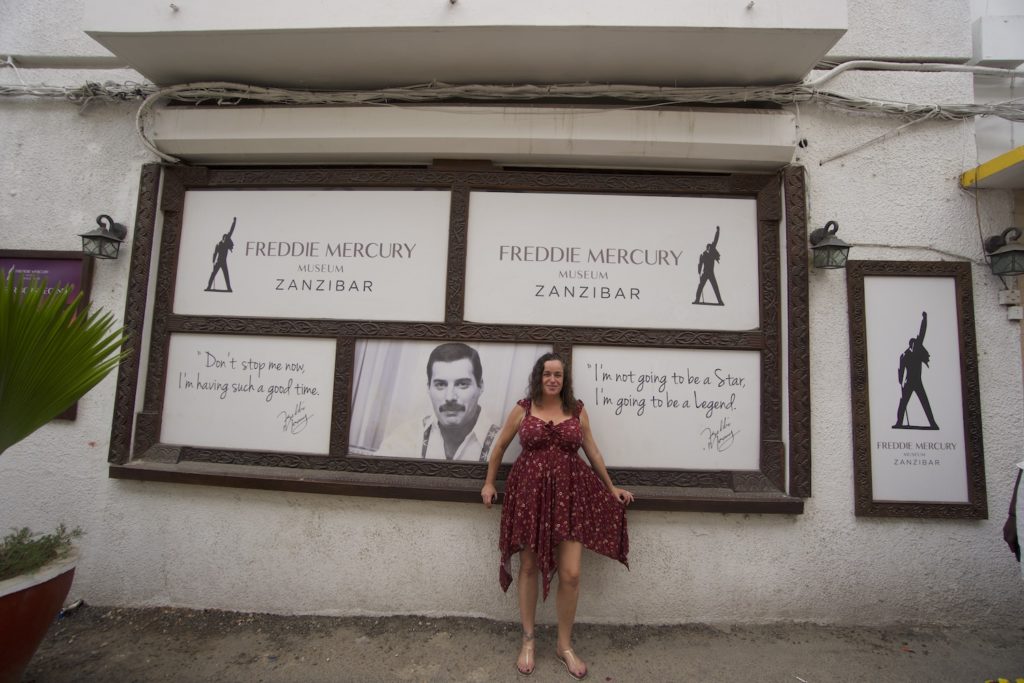
PRACTICAL INFO AND TIPS
The museum is open daily from 10 a.m until 6 p.m. and the entrance fee is around 12 000 Tanzanian Shillings.
There is also a cool picture opportunity at the front of the building and this the number one of the things to do in Stone Town for Queen fans.
TONGONI RUINS
The Tongoni ruins are some archaeological remains located in Tongoni village, close by Tangan town. The represent remnants of an ancient Swahili coastal trading settlement.
The Tongoni Ruins date back to the 15th and 16th centuries, featuring a collection of tombs, mosques, and other structures. The area served as a trading post and a burial ground, reflecting the Swahili culture’s influence in the coastal regions of East Africa.
The ruins are a testament to the historical interactions between local cultures and those engaged in Indian Ocean trade routes.
PRACTICAL TIPS AND INFORMATION
The entrance fee to the ruins is around 10000 Tanzanian Shillings and the site is easily accessible by dalla dalla, althought I do not recommend you in this case taking public transport. I have done the trip and the road quite bumpy and dusty.
KILIMANJARO
Kilimanjaro is the most iconic mountain in Tanzania and in Africa, as it is the tallest mountain in Africa. Its snow covered summit attracts adventurers and climbers from all over the world.
Kilimanjaro holds cultural significance for local Chagga people, who consider it a sacred site. The mountain’s slopes are witness to the Chagga’s sustainable land use practices.
The mountain is also home to some fascinating historical sites, such as some Maasai villages where visitors can get an insight into traditional African culture and history. It has gotten a bit scrubbed and touristy, but is still an interesting experience that shouldn’t be missed.
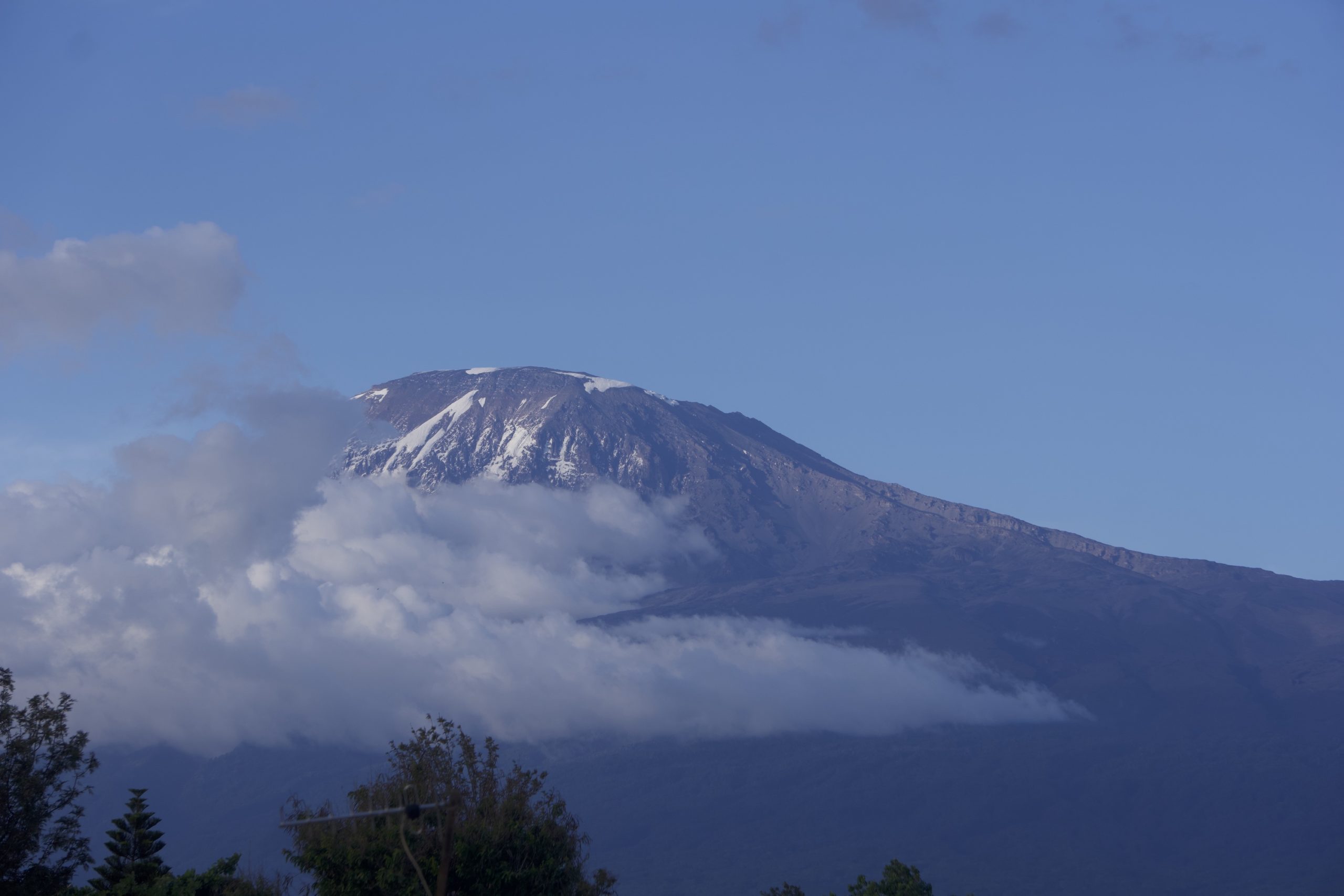
PRACTICAL TIPS AND INFORMATION
For arranging any cultural tours or climbing Kilimanjaro contact Bakari Hoya, my tour guide in the area and in Tanzania +255 655 385 109. You can also read his reviews in Trip Advisor.
HAMAMNI BATHS
The Hamamni Baths were built in the late 19th century during the reign of Sultan Barghash. They served as public baths and are an excellent example of Persian-inspired architecture. The structure consists of several domed rooms and chambers, showcasing intricate stonework and architectural details.
The baths played a crucial role in the social and cultural life of the community. People used them for bathing, socializing, and relaxation. The Hamamni Baths are part of the broader architectural and cultural heritage of Stone Town, which is recognized as a UNESCO World Heritage Site.
PRACTICAL TIPS AND INFORMATION
Entrance fee is 10 000 Tanzanian Shillings and it does not include a guide. I recommend you to take a guide to get the historical background and support the local communities.
THE CARAVAN SERAI
The Caravan Serai museum, situated in the historic town of Bagamoyo, features a small exhibit dedicated to documenting the slave trade. Housed within a historic building that served as a guest house for slave trade dealers in the 19th century, the museum provides insights into this dark period of history.
The Caravan Serai, characterized by Swahili-Islamic architecture, stands as a poignant reminder of Bagamoyo’s historical ties to 19th-century ivory and slave trade activities. Constructed in the 1860s by Mr. Said Magram Awadh, an Arab trader with a coconut plantation in Bagamoyo, this two-story building bears witness to the events of that era.
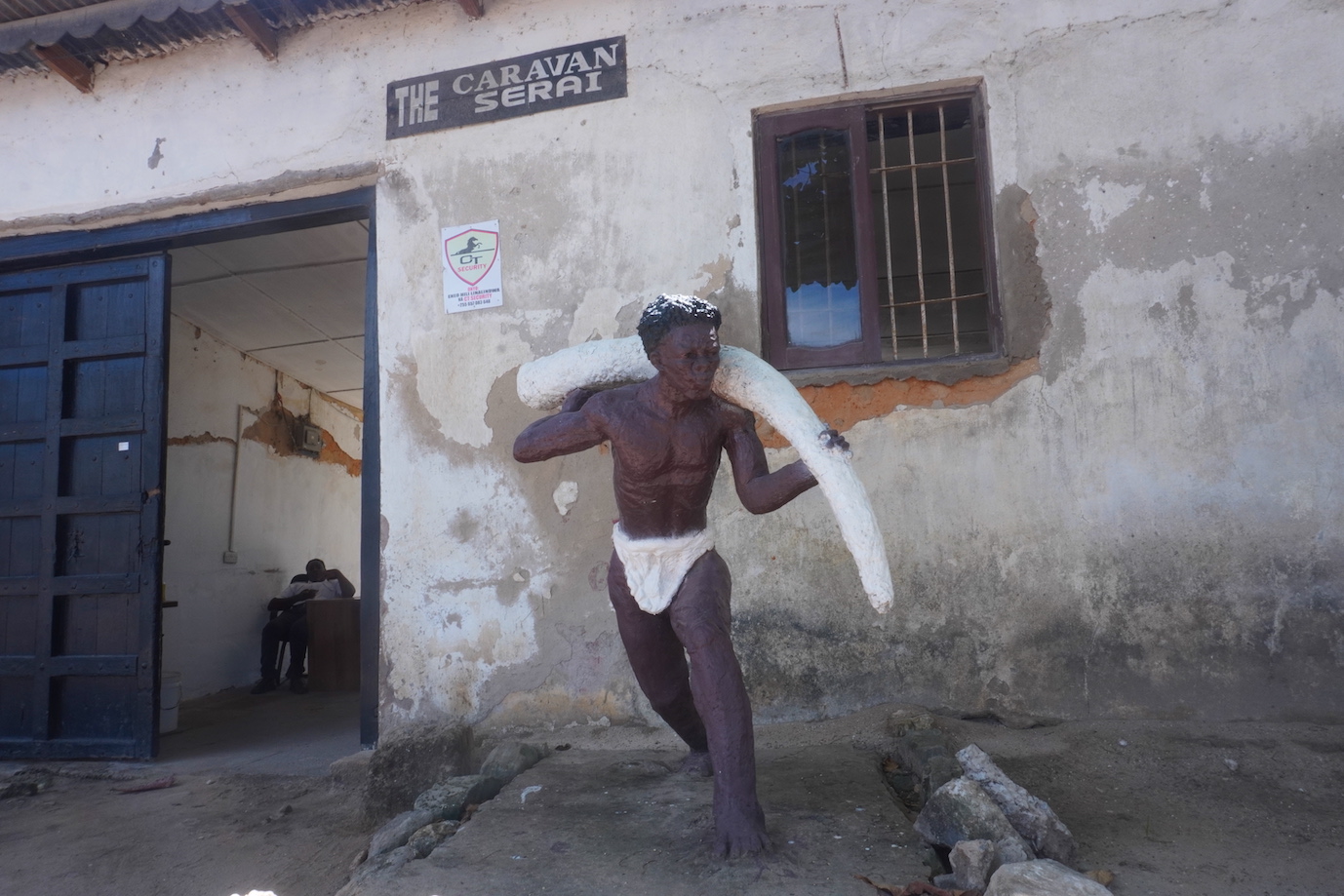
Within the museum, visitors can explore displays featuring coins, various types of ceramics, beads, and other ethnographic objects associated with the 19th-century slave and ivory trade. Bagamoyo served as a crucial terminus for the Central caravan route during this period, and the artifacts on exhibit shed light on the significant historical role played by the town.
PRACTICAL INFORMATION AND TIPS
The entrance fee to the museum is about 10$, 25 000 Tanzanian Shillings and can be purchases in the antiquities department in Bagamoyo. The museum is usually open daily from 10:00 to 18:00.
HOLY GHOST MISSION
The original Holy Ghost church, built in 1872, is the oldest standing church in East Africa and it is located in Bagamoyo. There is a newer church on the site nowadays that was constructed between 1910 and 1914.
In 1874, the Holy Ghost Mission hosted the interment of David Livingstone for a night. The Livingstone Tower, part of the original church, is a tribute to him.
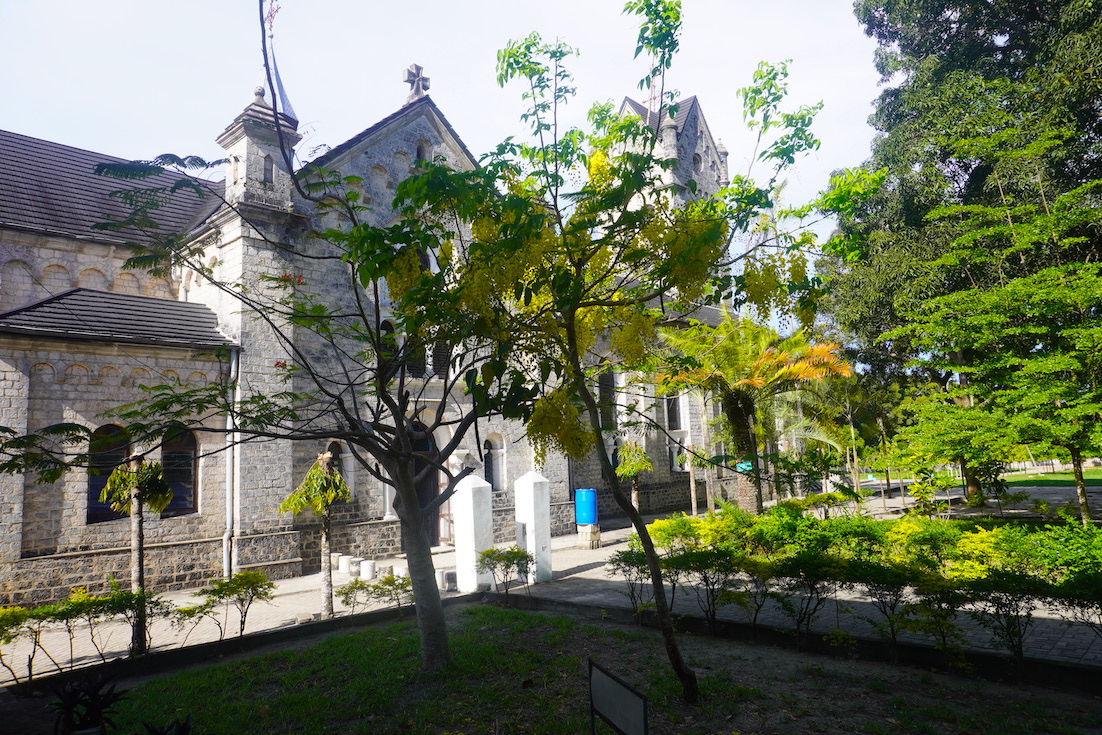
PRACTICAL TIPS AND INFORMATION
The church is located 2 Km of Bagamoyo town and it is open from 10am to 5pm. Entrance fee: 10,000 Tanzanian Shillings.
MAP OF TANZANIA SHOWING HISTORICAL SITES
How to use this map: Use your computer mouse (or fingers) to zoom in or out. Click on the icons to get. Click on the icons to get more information about each place. Click the arrow on the top left corner for the index. Click the star next to the map’s title to add it to your Google Maps account. To view the map on your smartphone or PC, open Google Maps, click the menu and go to “Your paces/Maps”. If you want to print the map or see it in a bigger window, click on the view larger map on the top right corner.
TANZANIA HISTORICAL SITES FAQs
WHAT IS THE MAJOR ARCHEOLOGICAL SITE IN TANZANIA?
Engaruka is an abandoned system of ruins located in northwest Monduli district in central Arusha region and it is considered to be the mayor archeological site in Tanzania.
HOW MANY UNESCO SITES ARE THERE IN TANZANIA?
There are seven World UNESCO heritage sites in Tanzania and six on the tentative list.
WHY ARE HISTORICAL SITES IMPORTANT IN TANZANIA?
The historical sites in Tanzania are an incredible testimony of the ancient engineering abilities and offer a glimpse into the abilities of the past cultures.
WHAT IS A HISTORICAL FACT ABOUT TANZANIA?
Tanzania has yielded some of the oldest human settlements, with the discovery of ancient human fossils concentrated in and around Olduvai Gorge (Oldupai) in the northern part of the country. This region is often hailed as “The Cradle of Mankind,” signifying its significance as a potential birthplace of humanity.
- BAGAMOYO: LAY DOWN YOUR HEART - April 5, 2024
- IRENTE VIEWPOINT LUSHOTO, USAMBARA MOUNTAINS - April 3, 2024
- 16 FACTS ABOUT BANGKOK - March 31, 2024

